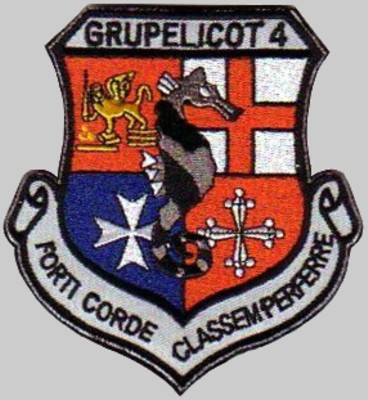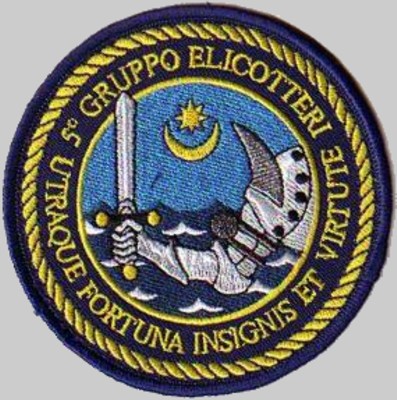 |
||
|
HOME
|
US Navy -
ships
|
US Navy - air
units
|
USMC - air
units
|
International
Navies
|
Weapon Systems
|
Special Reports |
||
|
Italian Navy / Marina Militare Italiana SH-90A (NH90 NFH) / MH-90A (NH90 TTH) Helicopter |
||
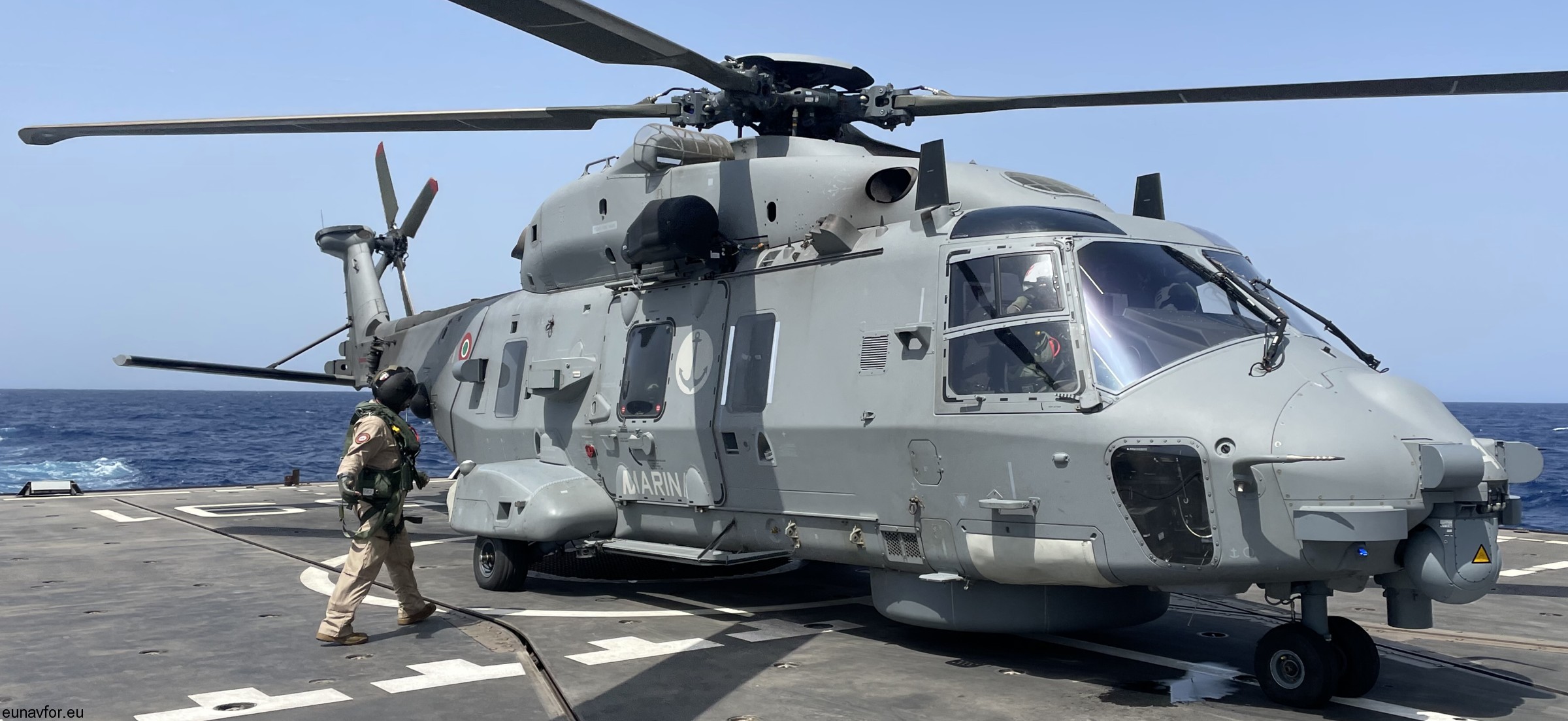 |
||
| 09/25 | ||
| Units: | ||
|
||
|
The NHIndustries NH90 ... is a medium-sized, twin-engine, multi-role military helicopter. It was developed in response to NATO requirements for a battlefield helicopter which would also be capable of being operated in naval environments. The NH90 was developed and is manufactured by NHIndustries, a collaborative company, which is owned by Airbus Helicopters, Leonardo (formerly AgustaWestland) and Fokker Aerostructures. The first prototype conducted its maiden flight in December 1995; the type first entered operational service in 2007. As of January 2017, the NH90 has logged 127,000 flight hours in the armed forces of thirteen nations. The NH90 has the distinction of being the first production helicopter to feature entirely fly by wire flight controls. There are two main variants, the Tactical Transport Helicopter (TTH) for army use and the navalised NATO Frigate Helicopter (NFH); each customer typically has various alterations and customisations made to their own NH90 fleets, such as different weapons, sensors and cabin arrangements, to meet their own specific requirements. In early service, the NH90 has suffered several teething issues, which has in turn delayed active deployment of the type by some operators. The primary role of the TTH version is the transport of 20 troops or more than 2,500 kg of cargo, heliborne operations and search & rescue. It can quickly be adapted to MEDEVAC/CASEVAC missions by fitting up to 12 stretchers or cargo delivery capability. Additional roles include special operations, electronic warfare, airborne command post, parachuting, VIP transport and flight training. The primary role of the NFH version is autonomous ASW and anti-surface unit warfare (ASuW), mainly from naval ships. These aircraft are equipped for day and night, adverse weather and severe ship motion operations. Additional roles include anti-air warfare support, vertical replenishment (VERTREP), SAR and troop transport. The NH90 was designed to fulfill a NATO staff requirement for a multi-role, medium-sized military helicopter for both land and maritime operations. According to Flight International, the NH90 has the distinction of being the first helicopter in the world to be developed in line with NATO requirements. As such, the design of the NH90 meets with multiple national and international standards, including military airworthiness processes in Germany, France, Italy, and the Netherlands; conformance with FAR 29 and MIL-STDS design standards, as well as DEF-STN 00-970 icing conditions performance and electro-magnetic compatibility. It is produced in two principal variants, the battlefield Tactical Transport Helicopter (TTH) and the maritime NATO Frigate Helicopter (NFH). One key innovation of the rotorcraft is the four-channel fly-by-wire control system employed; the NH90 is the first helicopter in the world to be equipped with full fly-by-wire flight controls. A four-axis autopilot is also integrated with the fly-by-wire system, as are mission and navigation systems to enable greater autonomy during operations and to reduce pilot workload. The flight envelope of the NH90 is capable of all-weather day-and-night operations, ship-borne operations during high sea states, across a temperature range from −40 °C to +50 °C, and up to a maximum altitude of 20,000 feet. Power is provided by a pair of turboshaft engines, dependent on customer selection, the NH90 is either fitted with Rolls-Royce Turbomeca RTM322 or General Electric T700E powerplants; exhaust gases from the engines are filtered through an infrared suppression system for decreased sensory visibility. According to Airbus Helicopters, the NH90 possesses the lowest radar signature in its class, principally due to its diamond-shaped composite fuselage. The NH90 featured an advanced composite airframe, designed for ballistic tolerance, a high level of crashworthiness, lower weight, and 30 per cent greater endurance than a metallic counterpart. The four main rotor blades are also composed of composite materials, increasing fatigue strength and lifespan while providing for greater damage tolerance. The unobstructed main cabin area is entered either by large sliding doors on either side of the fuselage or via a rear ramp, the cabin is designed to accommodate modular equipment packages to enable the rotorcraft to be rapidly reconfigured, providing for operational flexibility. In a troop-transport capacity, the cabin can accommodate up to 20 fully equipped soldiers, or up to 12 stretchers in a medical evacuation role, some light vehicles may also be transported; the main cabin is equipped with environmental control systems and sound proofing measures to improve passenger conditions. The NH90 can be equipped with various mission-specific systems, including modular armor plating around the cabin area for undertaking high-risk missions and an ice protection system for operations within cold climates. It can also make use of the In-Hover Flight Refuelling System (HIFR) as well as additional internal and external fuel tanks to conduct extended range missions. Other equipment includes a wire strike protection system, rappelling system, hoist, cargo hook, search light and various seating options, including crashworthy foldable seats. For performing maritime operations, such tasked NH90s are typically equipped with the Harpoon deck-locking system, automatic main rotor blade and tail folding mechanisms, and other deck handling systems to conduct all-weather ship-borne operations; it is also typically outfitted with dipping sonar and sonobuoy processing equipment. The NH90 features a range of customizable avionics systems, dependent on customer selection and purpose. On some models, French firm Thales Group provides various parts of the avionics, such as the glass cockpit, full-colour multifunction displays, tactical mission and encrypted communication systems, the TopOwl helmet-mounted sight/display, IFF and autonomous navigation systems, and the electrical power generation system. Other systems include a forward looking infrared (FLIR), weather radar, digital map generation system, enhanced ground proximity warning system, personal locator system, and VHF/UHF/HF tactical radios. In 2015, the NH90 became the first helicopter to receive an laser-based airborne collision avoidance system. Onboard mission systems feature a dual-redundant databus, are compliant with MIL-STD 1553, and are comprehensively managed via sensor fusion functionality. Customer demand for future avionics improvements such as new data links and communication systems, as well as additional electro-optical sensors, have been anticipated by the manufacturer. In June 2000, Italy signed an initial contract for a batch of 60 TTH (Tactical Transport Helicopter) for the Italian Army, along with a further 46 NFH (NATO Frigate Helicopter) and 10 TTH for the Italian Navy. On 30 December 2007, the first NH90 TTH was formally handed over to the Italian Army. On 23 June 2011, the navy received its first NH90, which was delivered to an interim MOC (Meaningful Operational Capability) standard, capable of performing training, search and rescue, and utility operations; anti-submarine and anti-surface warfare capabilities were not initially available until aircraft are retrofitted to a FOC (Final Operational Capability) standard. In May 2013, the Italian Army took delivery of the first NH90 TTH of a FOC standard; in November 2013, the Italian Navy took delivery of its first FOC-standard NH90 NFH. The Italian NH90 fleet uses the GE T700-T6E1 turbine engine. Italian NH90s are used for the following tasks tactical troop transport according NHI as reported by HeliHub news: logistics support, special operations, cargo resupply and hoisting, medical evacuations, light vehicle transport, disaster relief, and emergency response operations. In 2012, Italy deployed a total of 5 Army NH90 TTHs to support troops participating in the International Security Assistance Force in Afghanistan. The NH90s, which were air-transported individually by allied Boeing C-17 Globemaster III cargo aircraft, replaced six Agusta/Bell 205s in performing tactical transport and medevac operations; Army Aviation Commander Gen. Enzo Stefanini stated that "…in Afghan conditions, the NH90 is delivering performance 15 percent above what was envisaged". In December 2022, Italy received its 60th and final TTH (Transport version) from the Venice Tessera facility which opened in 2010 and delivered its first aircraft in 2011. In October 2023, the Italian Navy received its 56th and final NH90; that same month, the service also reportedly attained a cumulative 35,000 flights hours across its fleet. SH-90A - Italian military designation for NH90 NFH MH-90A - Italian military designation for NH90 TTH NHIndustries ... was formed as a partnership between Eurocopter of France and Germany (now Airbus Helicopters with 62.5 %), Agusta of Italy (now Leonardo with 32 %) and Stork Fokker Aerospace of the Netherlands (now Fokker Aerostructures with 5.5 %). Characteristics: Crew: 3-4 Capacity: 20 seated troops; or 12 medevac stretchers; or 2 NATO pallets; or 4200 kg (9260 lb) external slung load Length: 16.13 m (52 ft 11 in) Rotor diameter: 16.30 m (53 ft 6 in) Height: 5.23 m (17 ft 2 in) Empty weight: 6400 kg (14100 lb) Useful load: 4200 kg (9260 lb) Max. takeoff weight: 10600 kg (23370 lb) Powerplant: 2 x General Electric T700-T6E turboshaft, 1577 kW (2115 shp) each Maximum speed: 300 km/h (162 knots, 186 mph) Range: 800 km (497 mi) TTH / 1000 km (621 mi) NFH Service ceiling: 6000 m (20000 ft) Rate of climb: 8 m/s (1574 ft/m) |
||
| images | ||
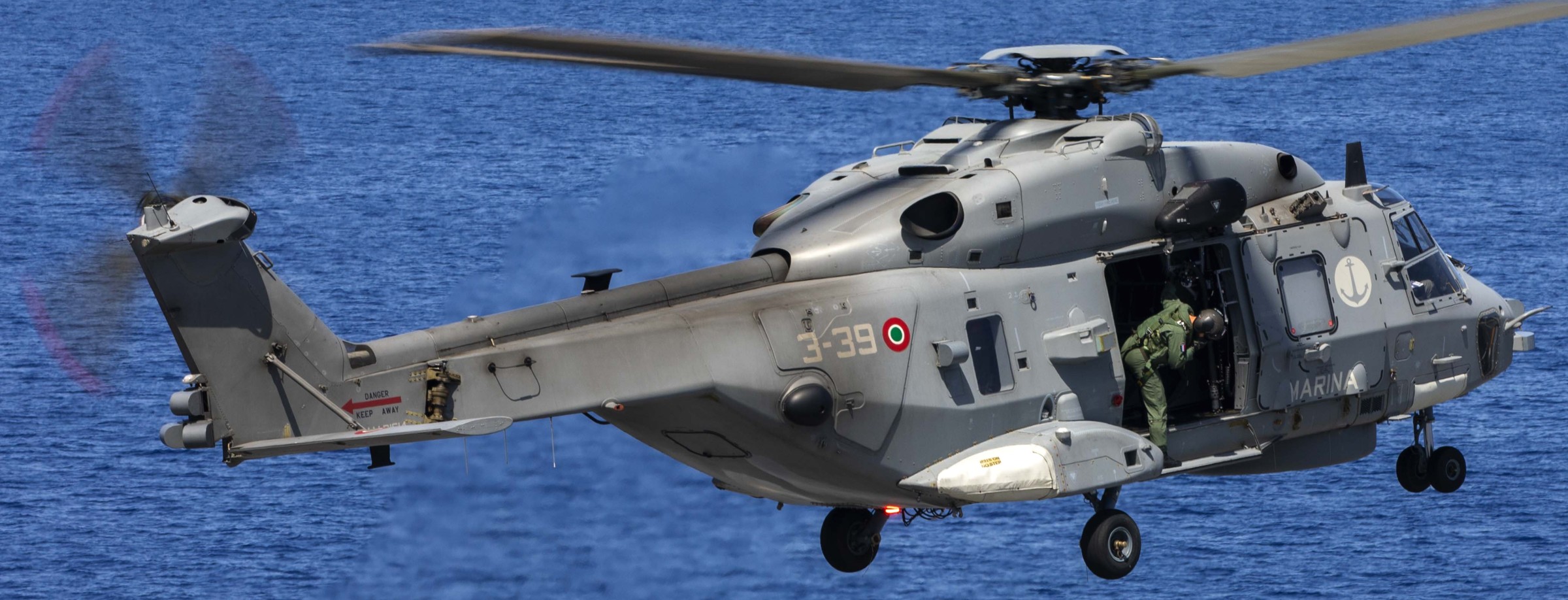 SH-90A NFH (MM81614 / 3-39) 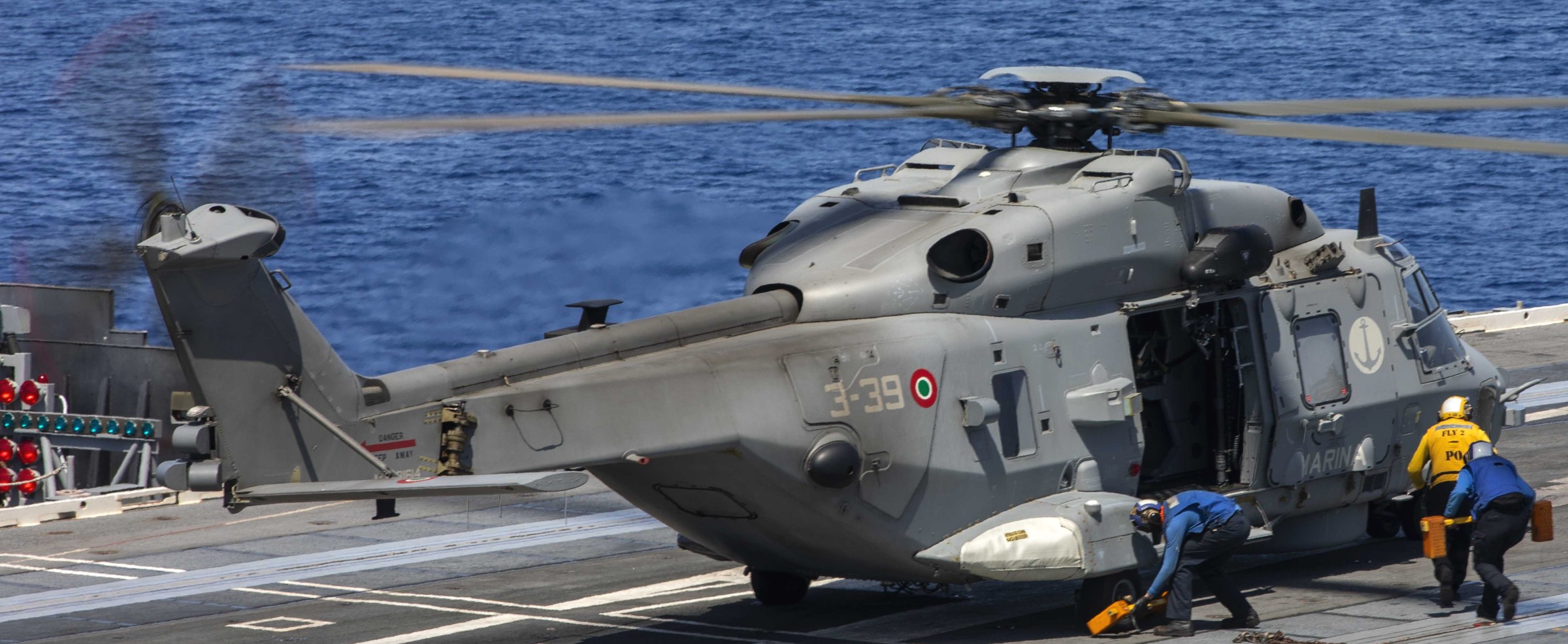 SH-90A NFH (MM81614 / 3-39) 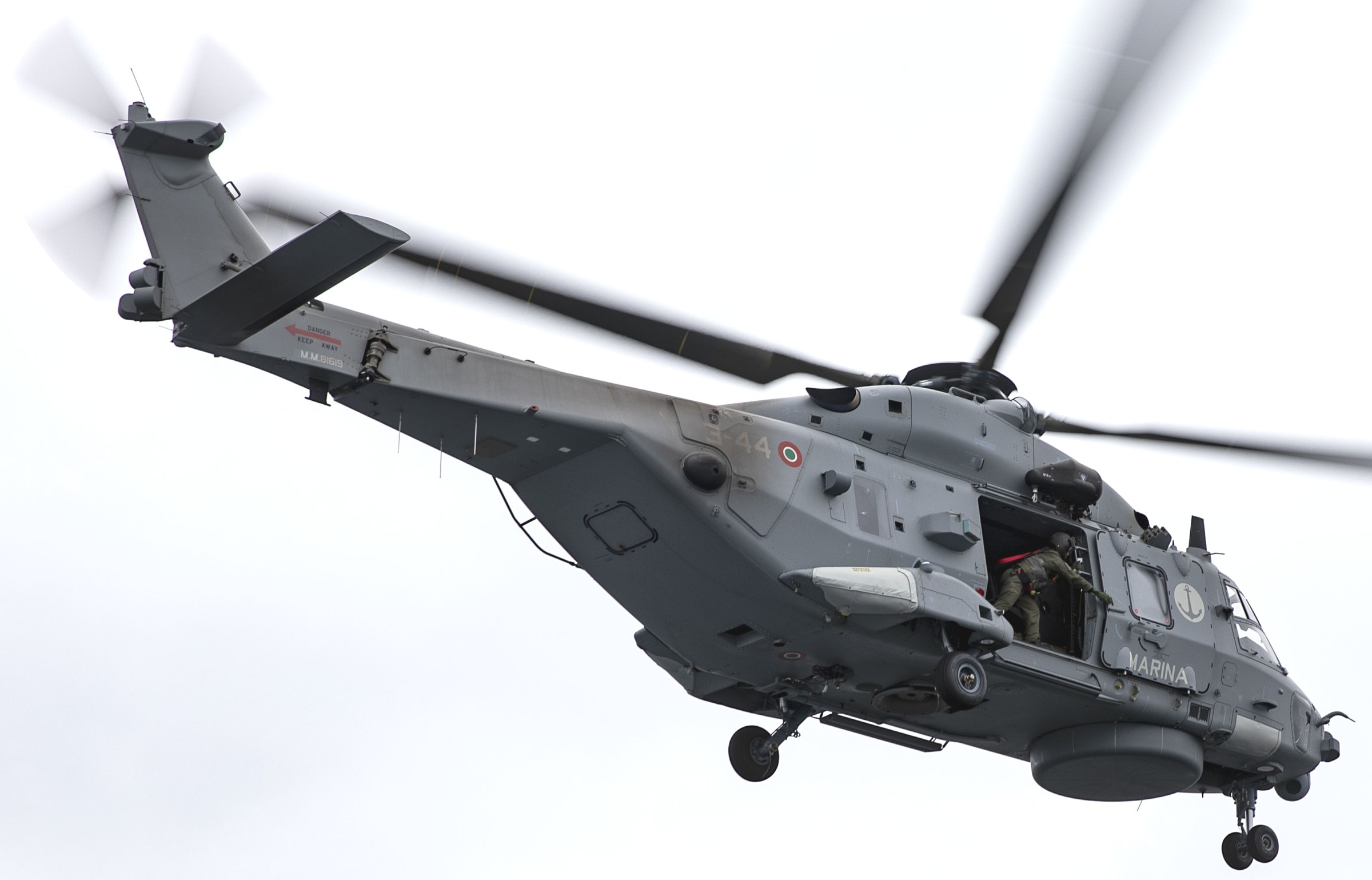 SH-90A NFH (MM81619 / 3-44) 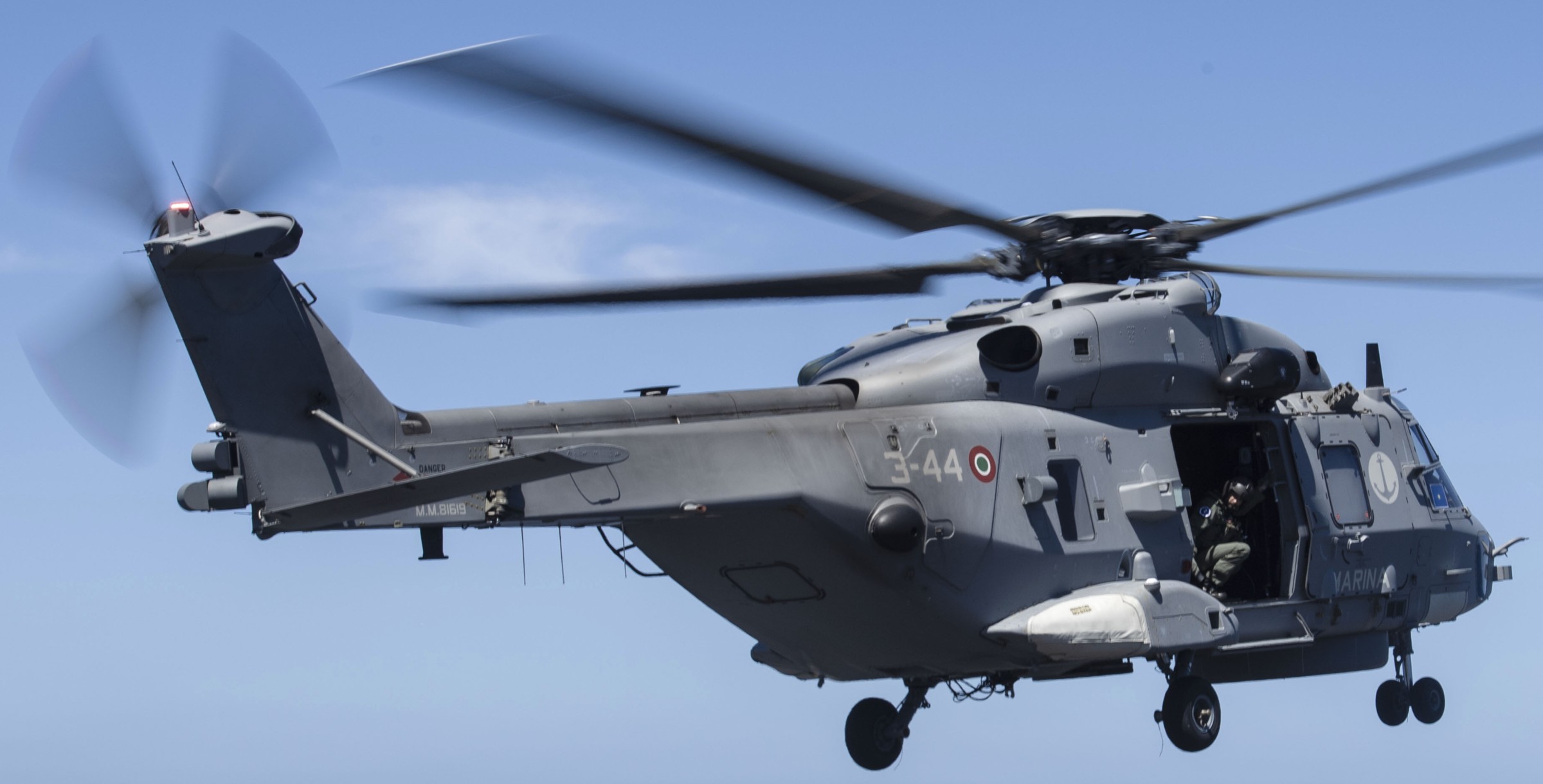 SH-90A NFH (MM81619 / 3-44)  SH-90A NFH (MM81580 / 3-04)  SH-90A NFH (MM81577 / 3-01) 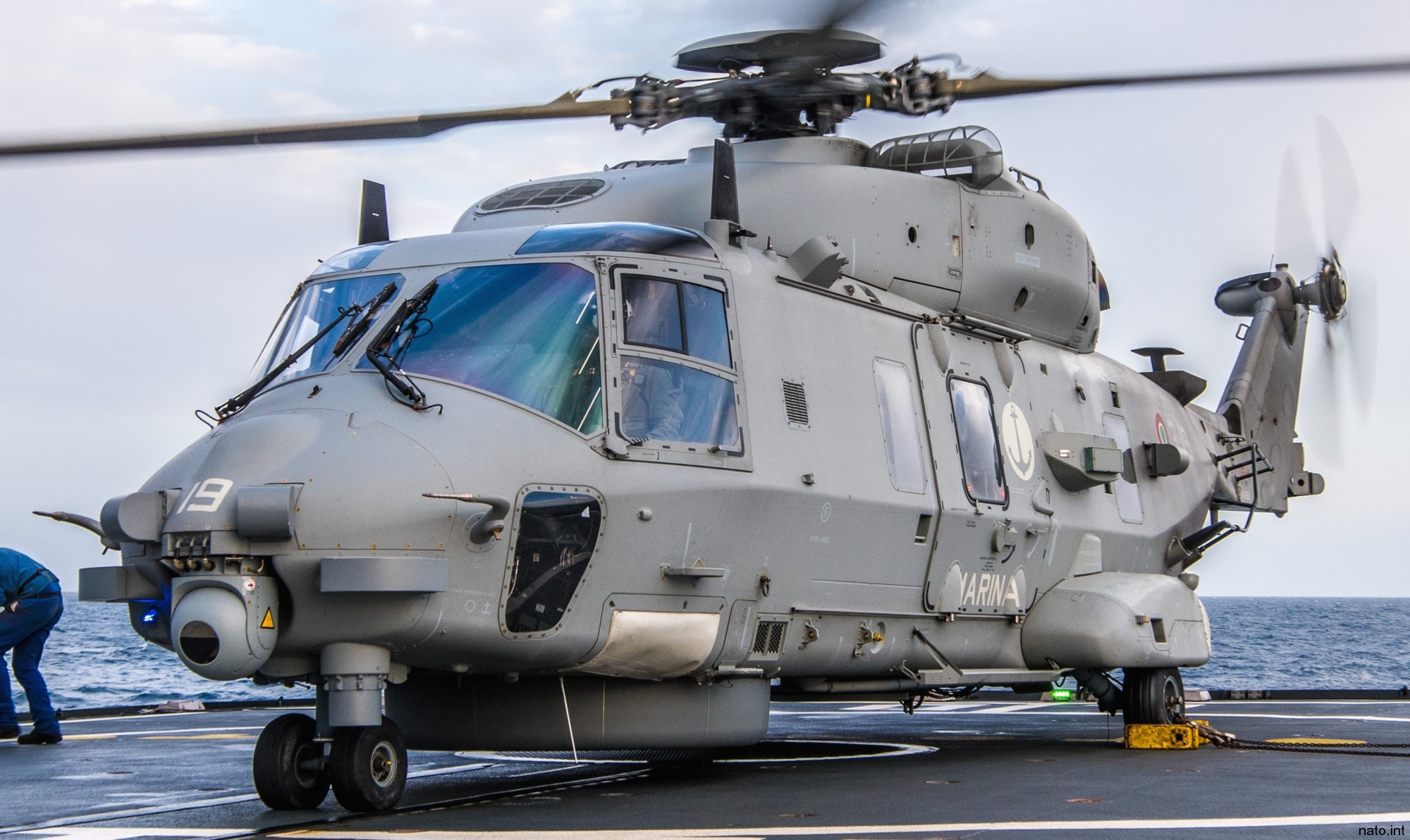 SH-90A NFH (MM81594 / 3-19) 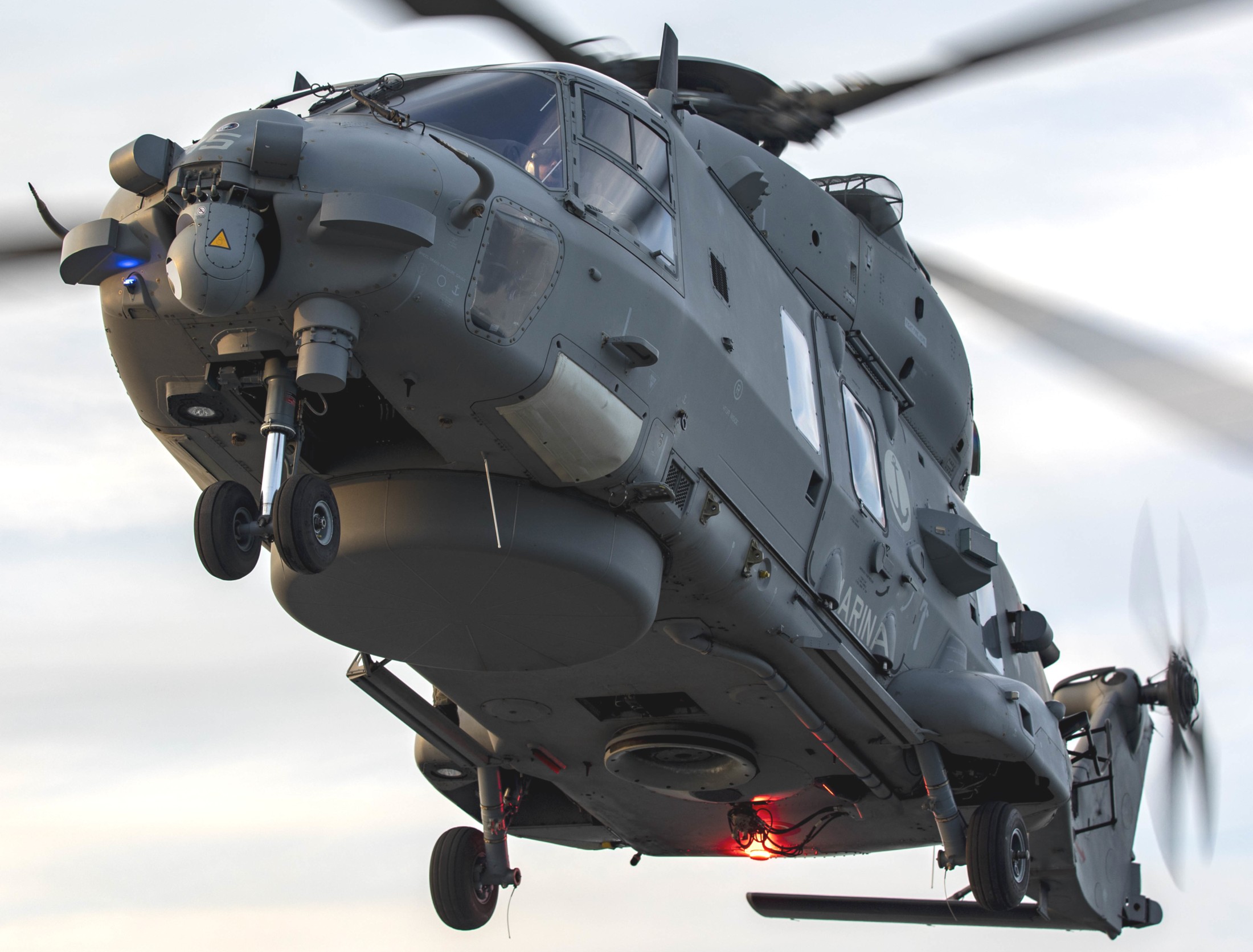 SH-90A NFH (MM81591 / 3-15)  SH-90A NFH (MM81584 / 3-08) 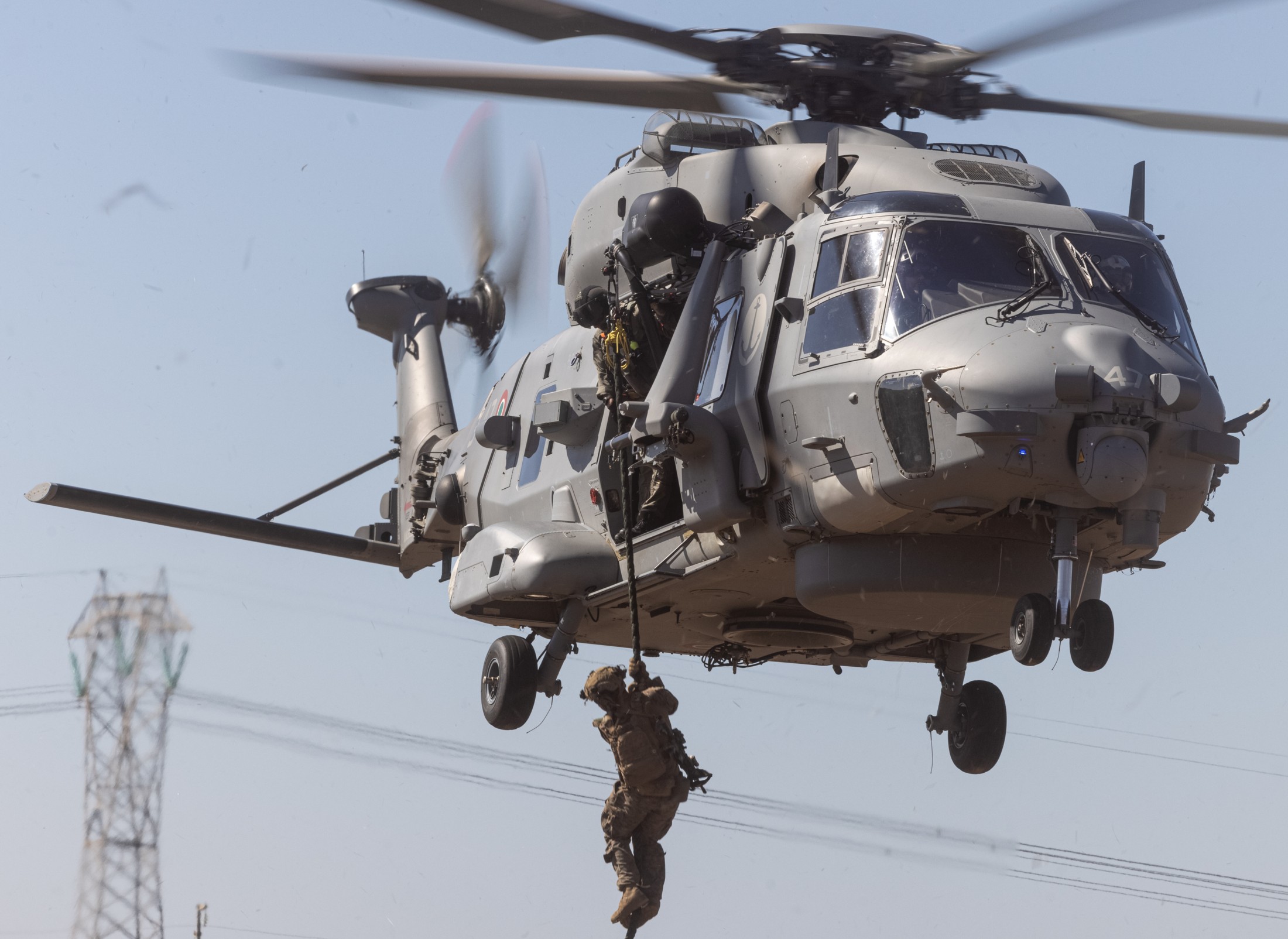 SH-90A NFH (MM81622 / 3-47) 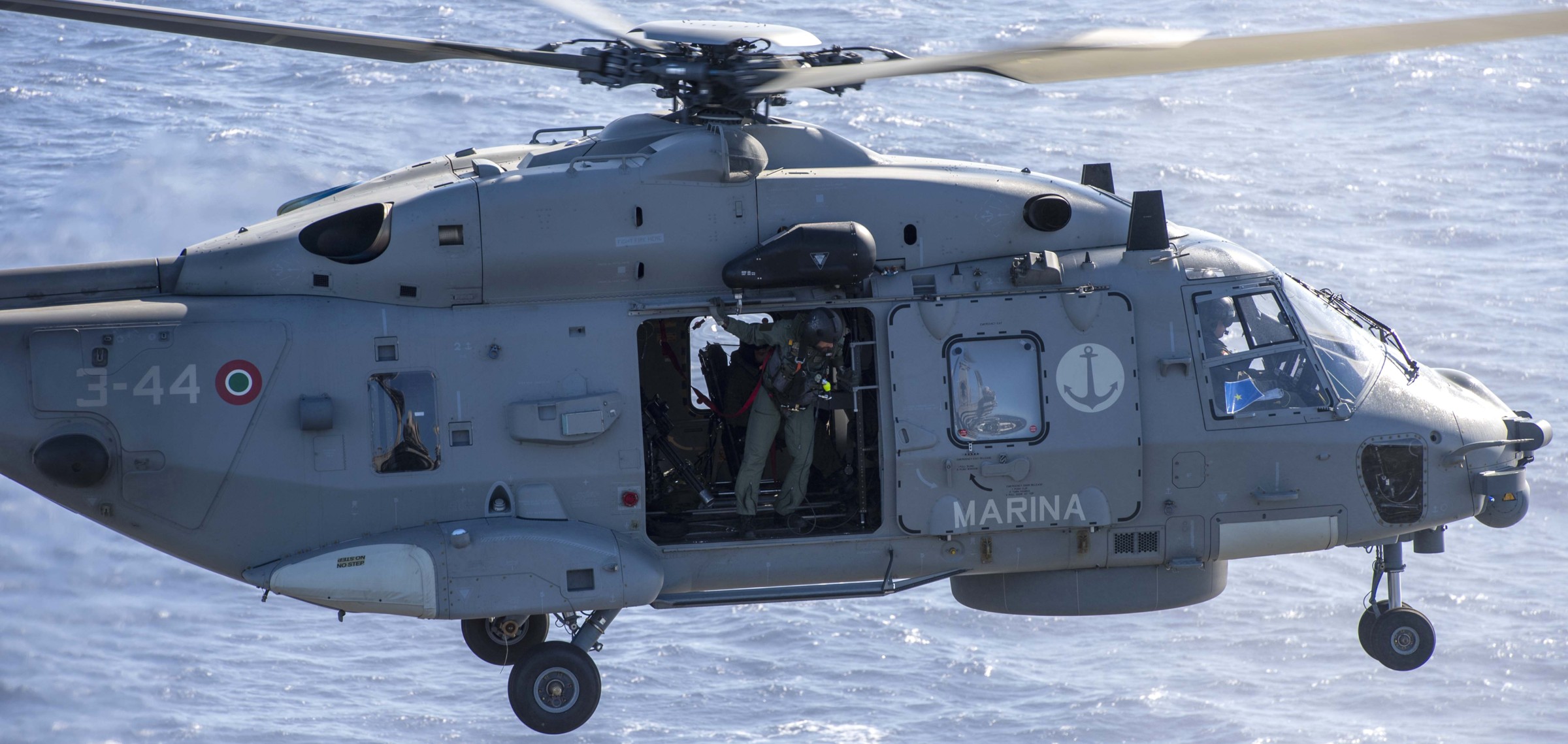 SH-90A NFH (MM81619 / 3-44)  SH-90A NFH (MM81619 / 3-44)  SH-90A NFH (MM81619 / 3-44)  SH-90A NFH (MM81584 / 3-08 + MM81585 / 3-09) 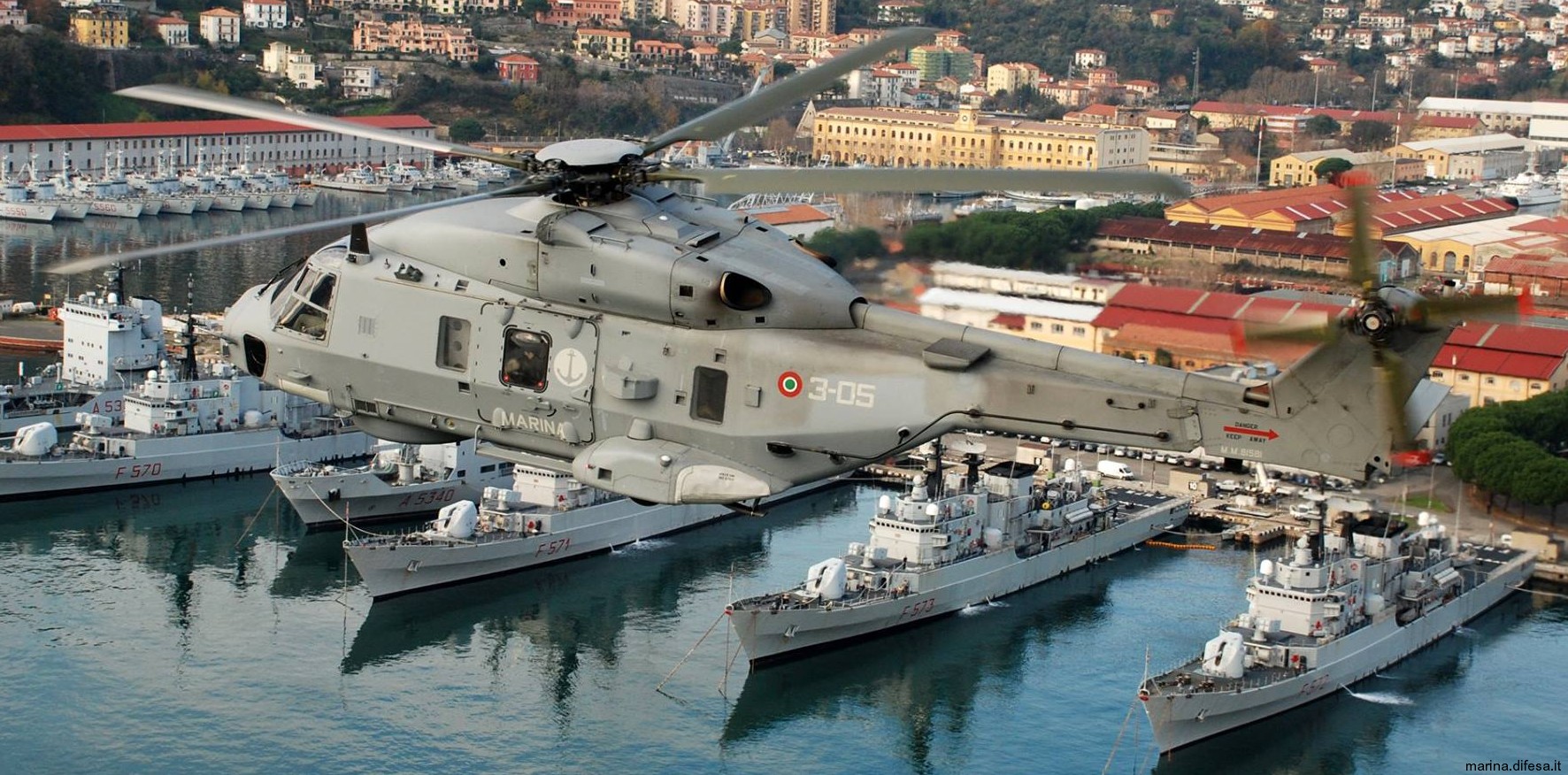 SH-90A NFH (MM81581 / 3-05)  SH-90A NFH (MM81578 / 3-02) 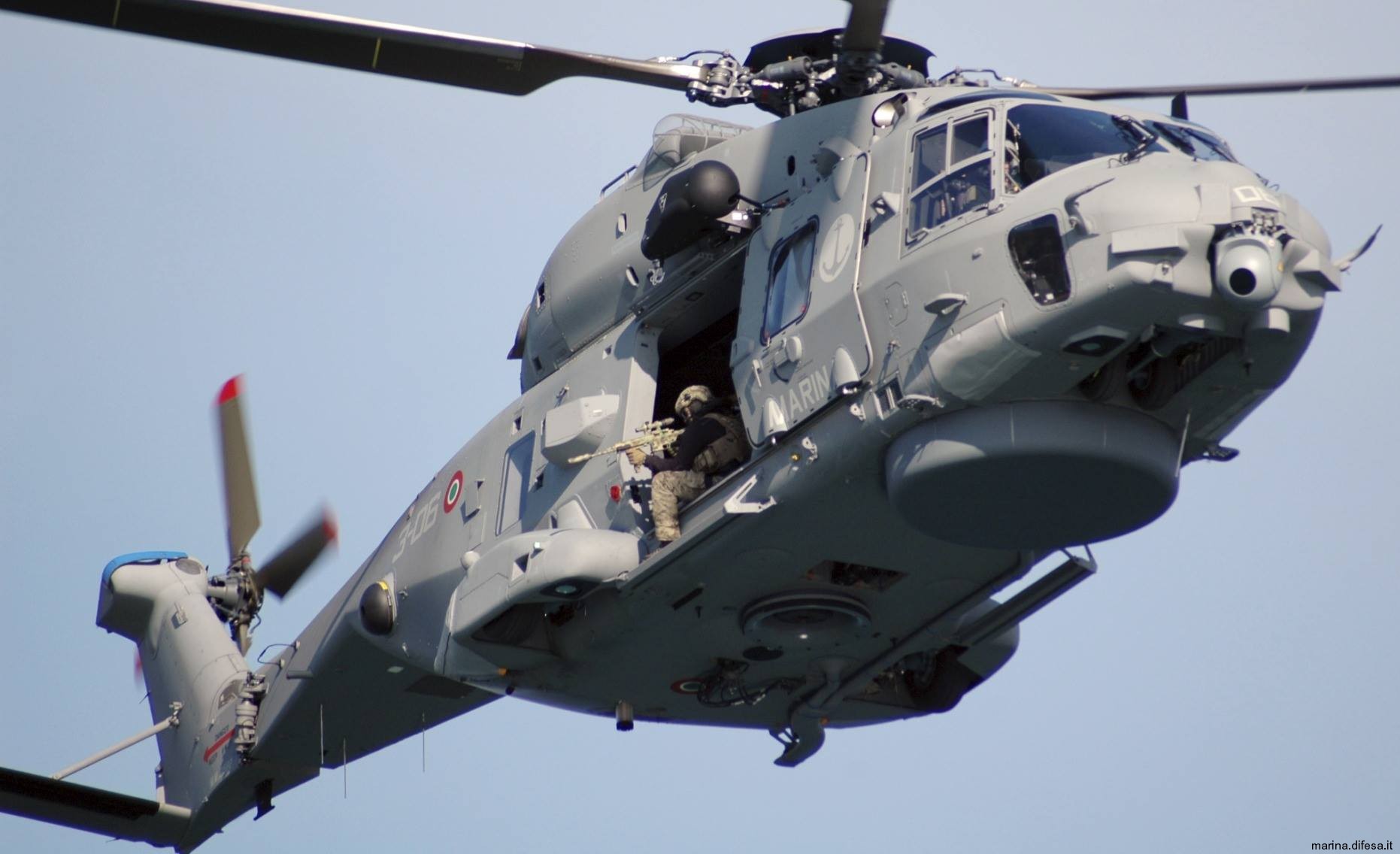 SH-90A NFH (MM81582 / 3-06)  SH-90A NFH (MM81584 / 3-08)  SH-90A NFH (MM81619 / 3-44)  SH-90A NFH (MM81586 / 3-10) 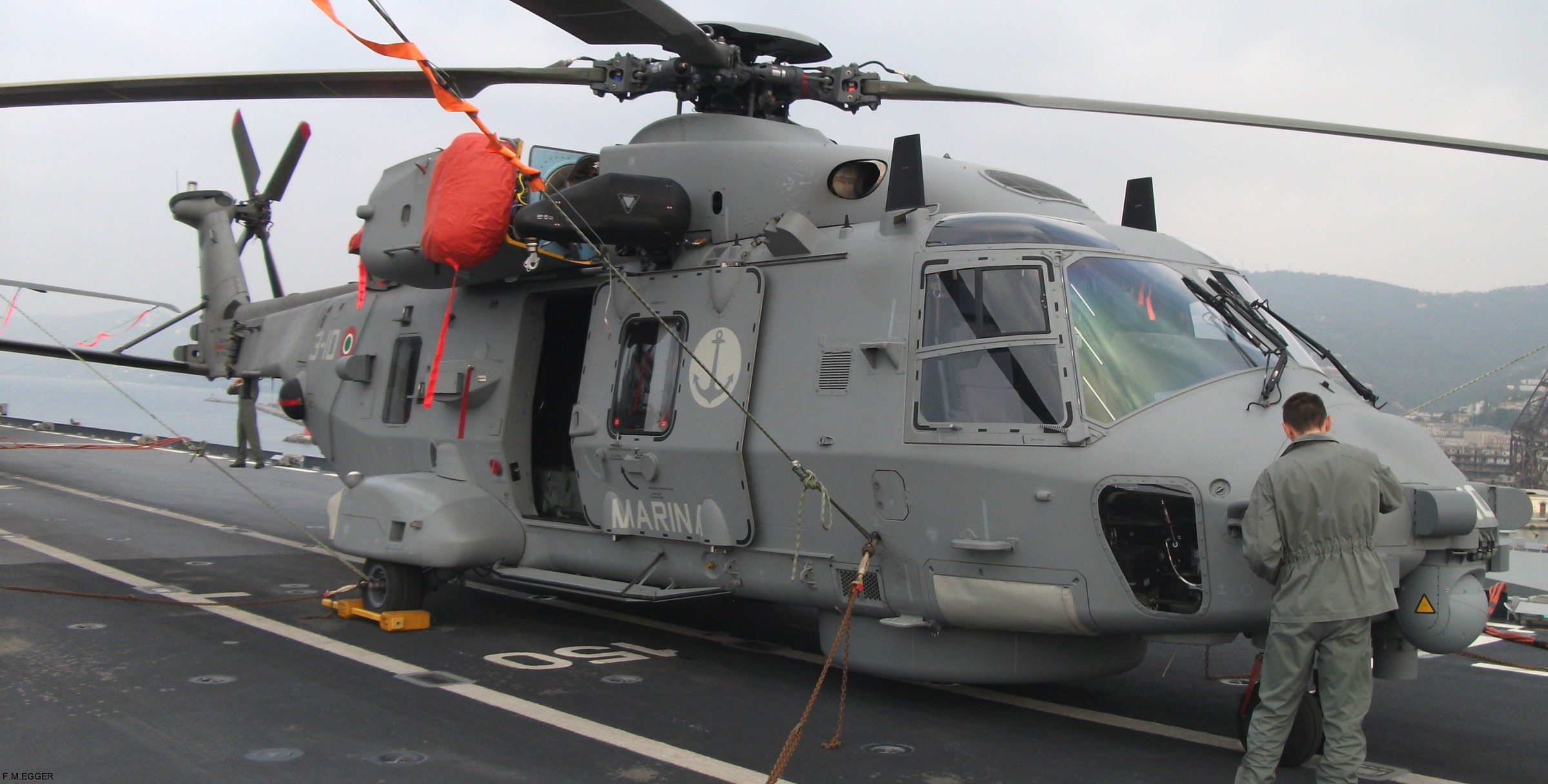 SH-90A NFH (MM81586 / 3-10) 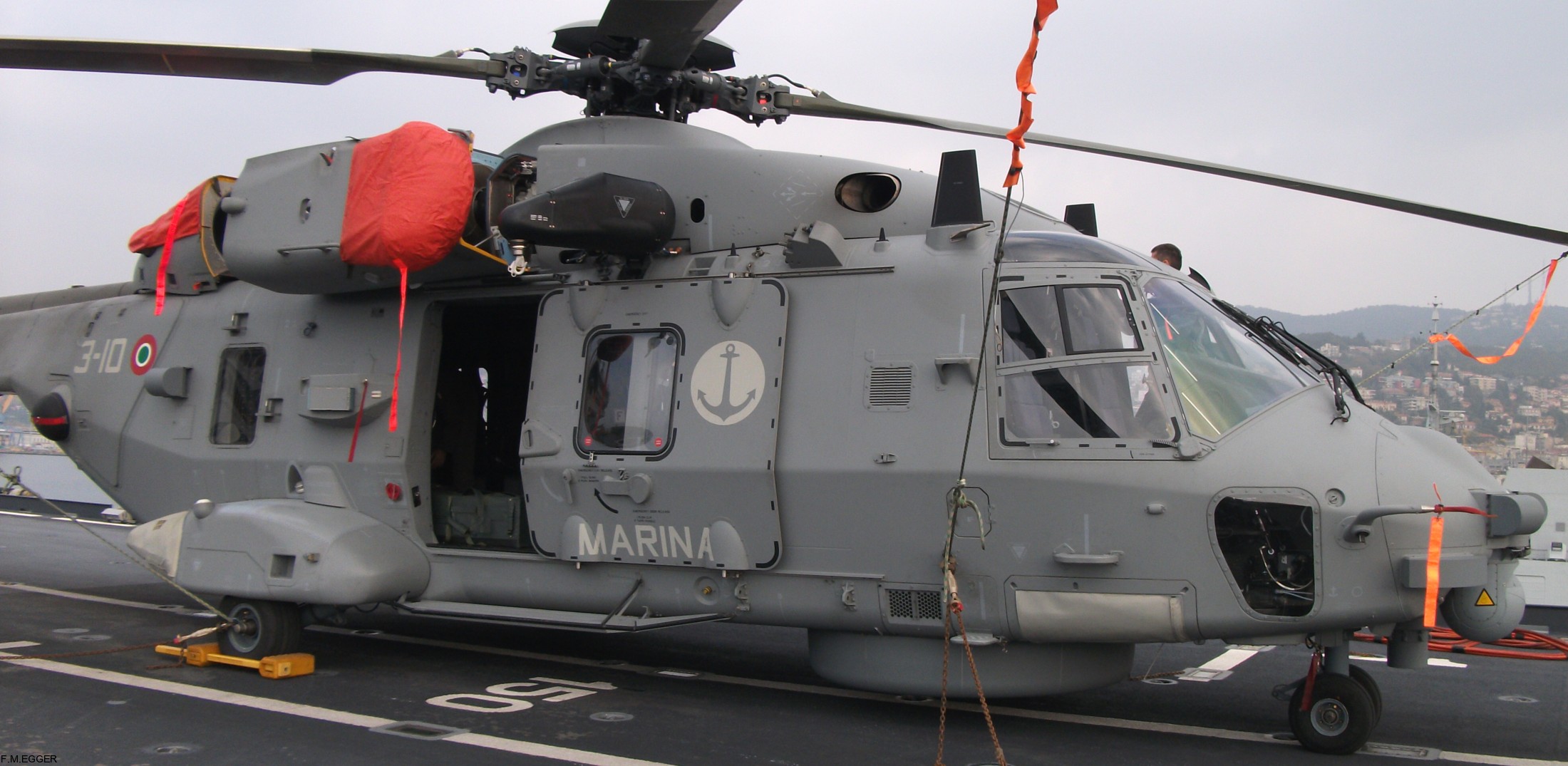 SH-90A NFH (MM81586 / 3-10) 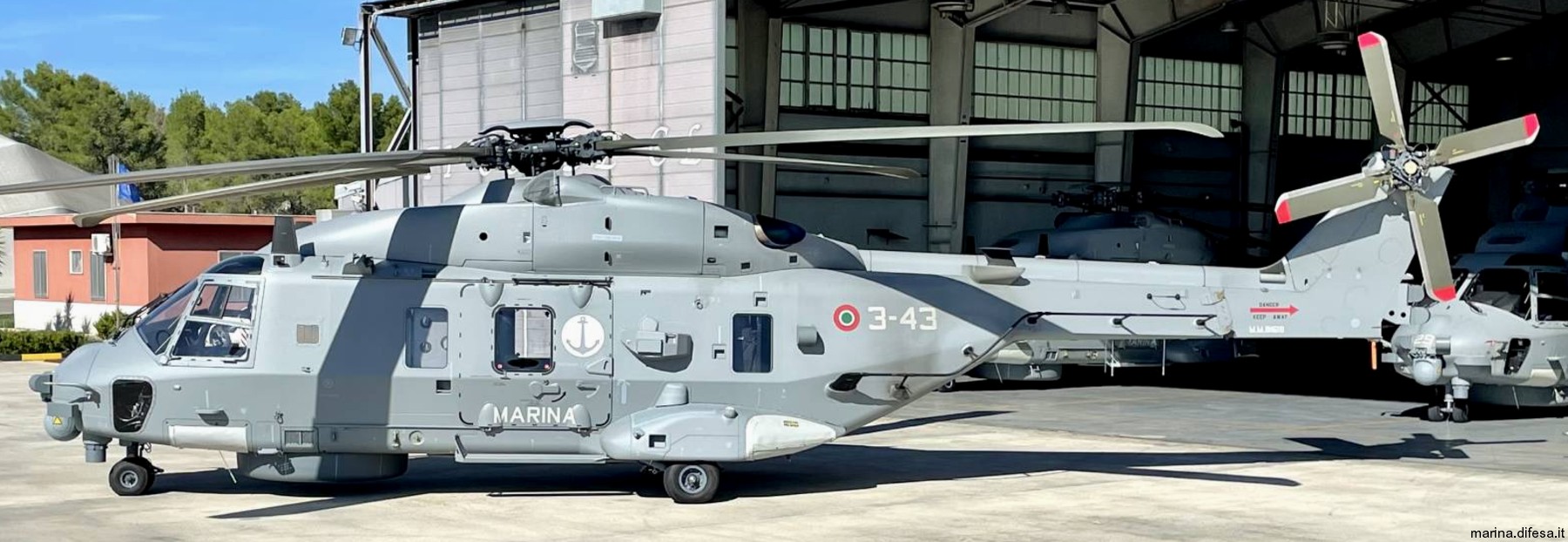 SH-90A NFH (MM81618 / 3-43)  SH-90A NFH (MM81594 / 3-19) 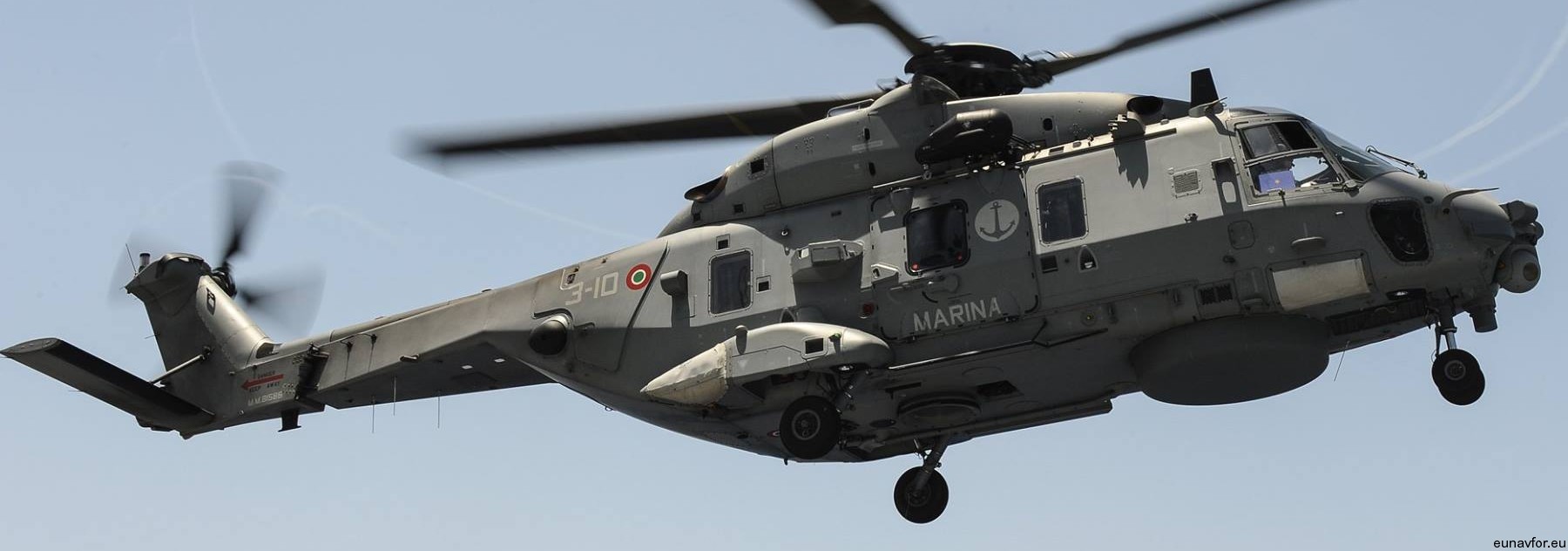 SH-90A NFH (MM81586 / 3-10) 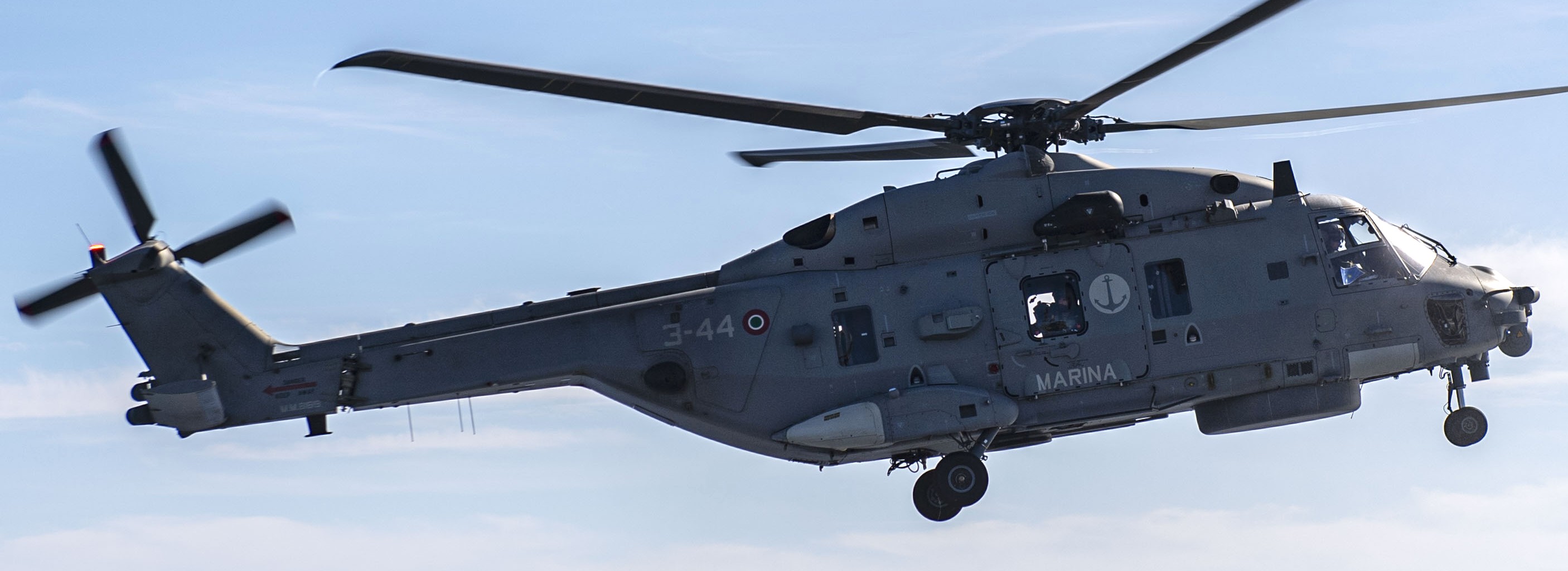 SH-90A NFH (MM81619 / 3-44) 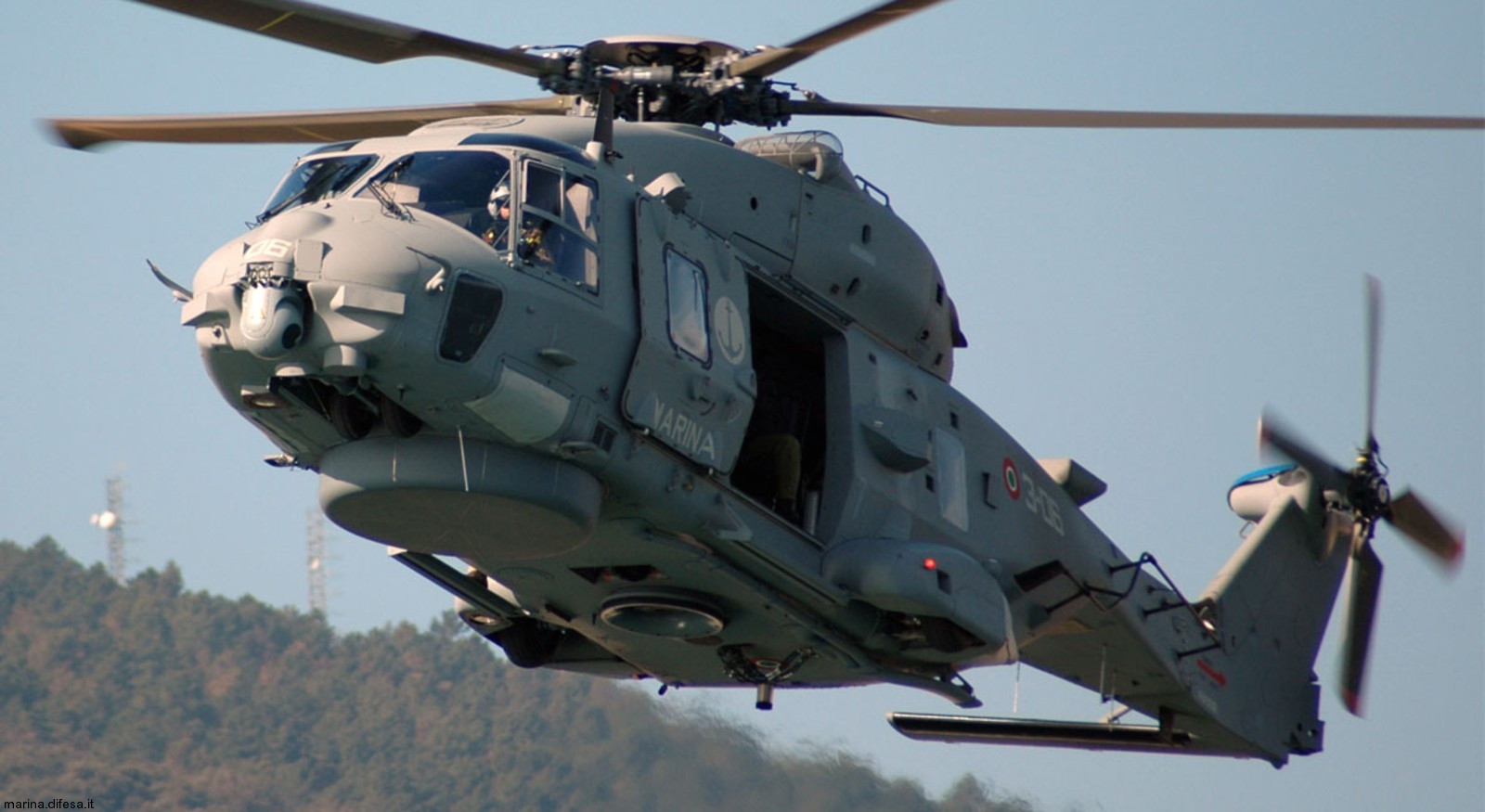 SH-90A NFH (MM81582 / 3-06) 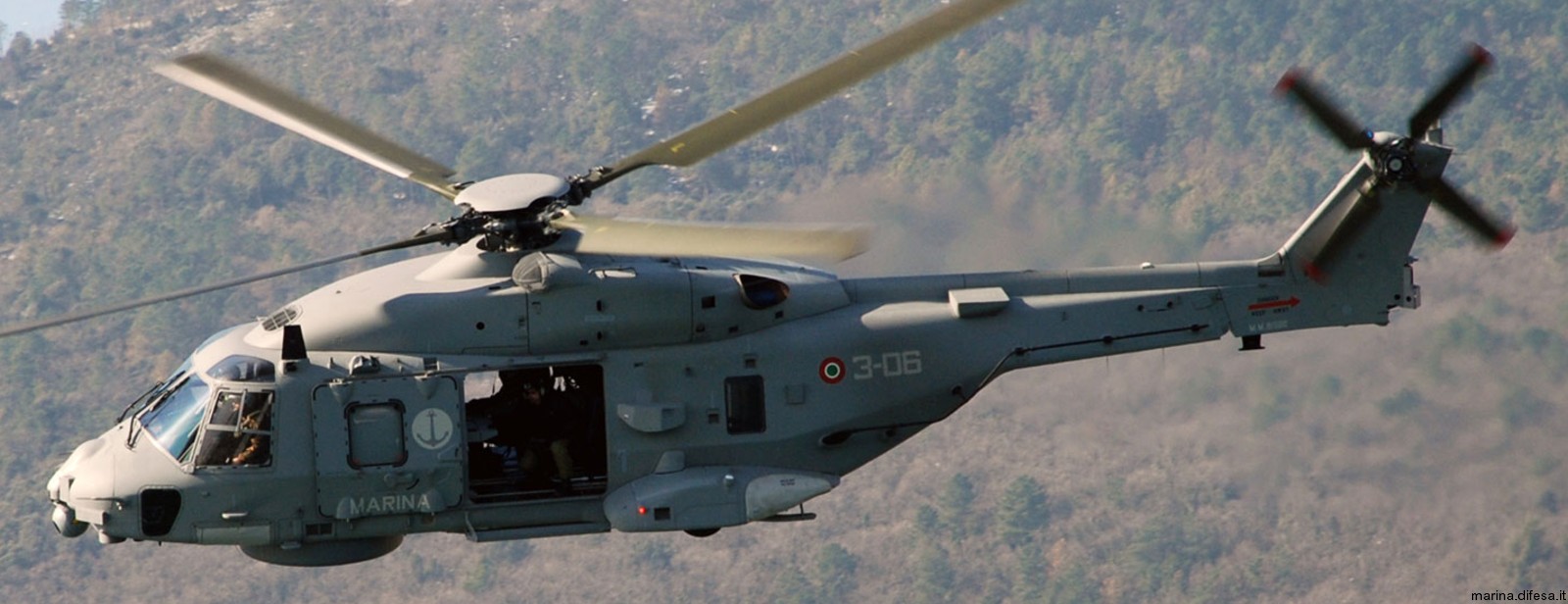 SH-90A NFH (MM81582 / 3-06) 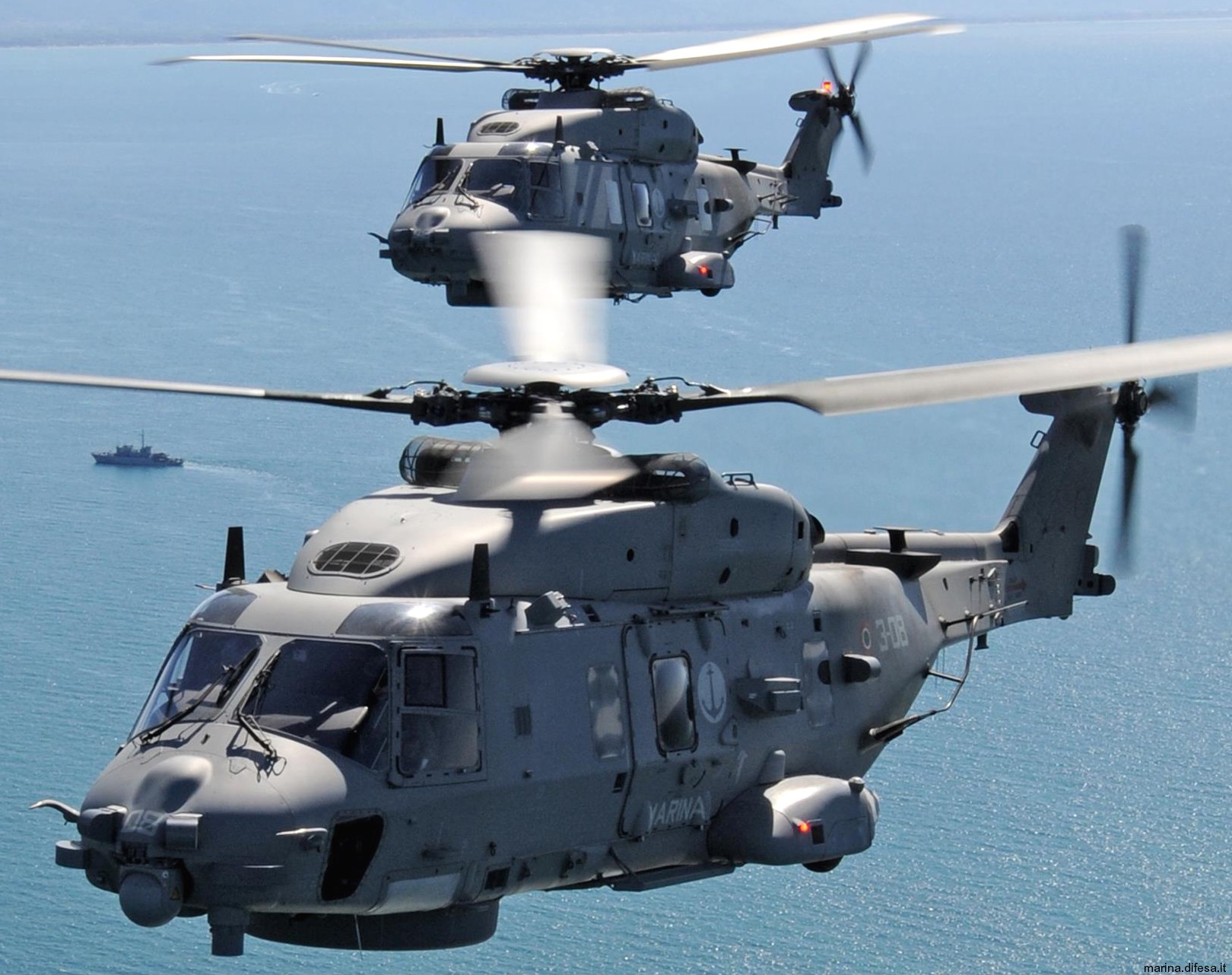 SH-90A NFH (MM81584 / 3-08)  SH-90A NFH (MM81581 / 3-05)  SH-90A NFH (MM81580 / 3-04) 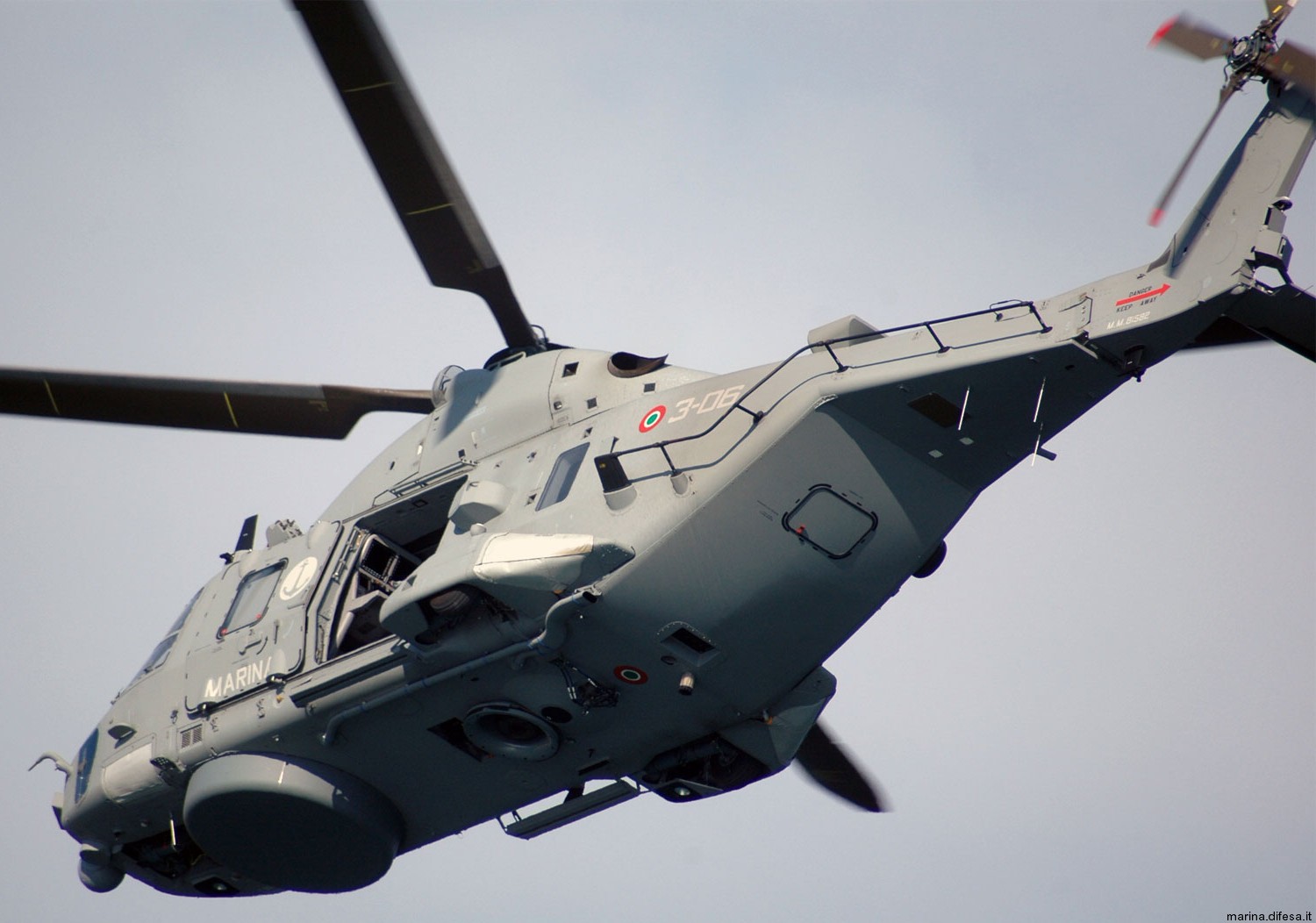 SH-90A NFH (MM81582 / 3-06) 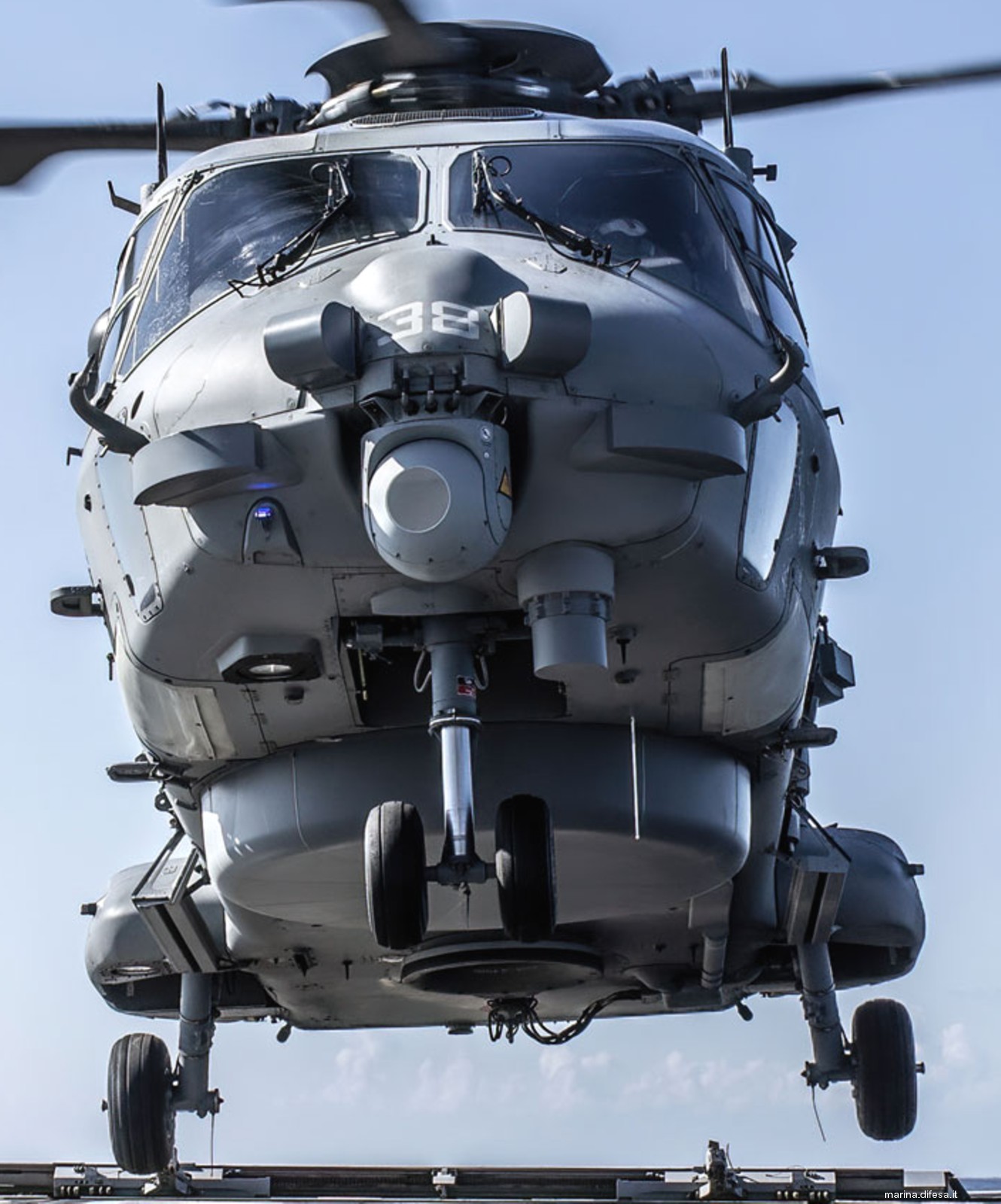 SH-90A NFH (MM81613 / 3-38)  SH-90A NFH 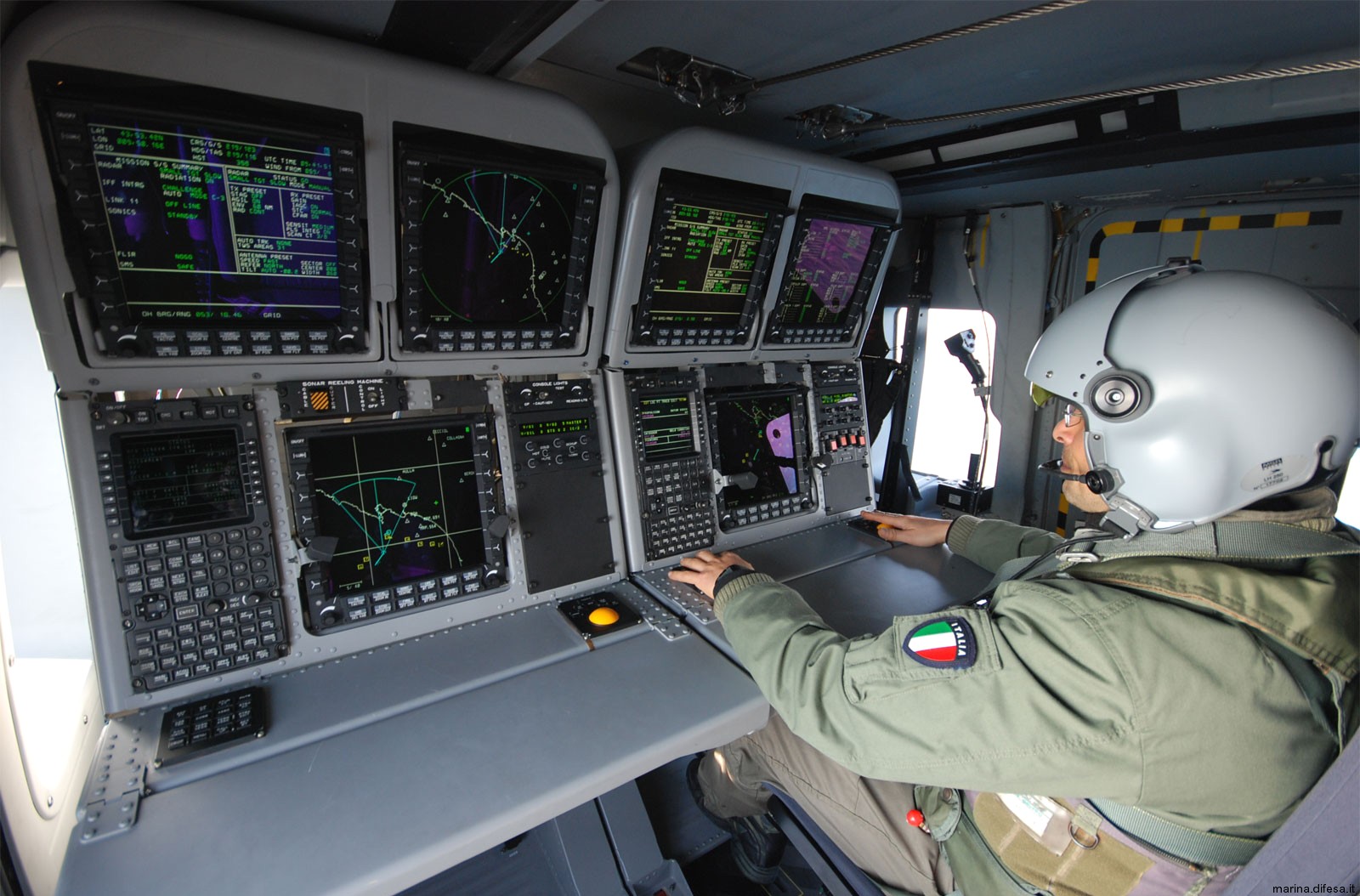 SH-90A NFH - ASW operator console 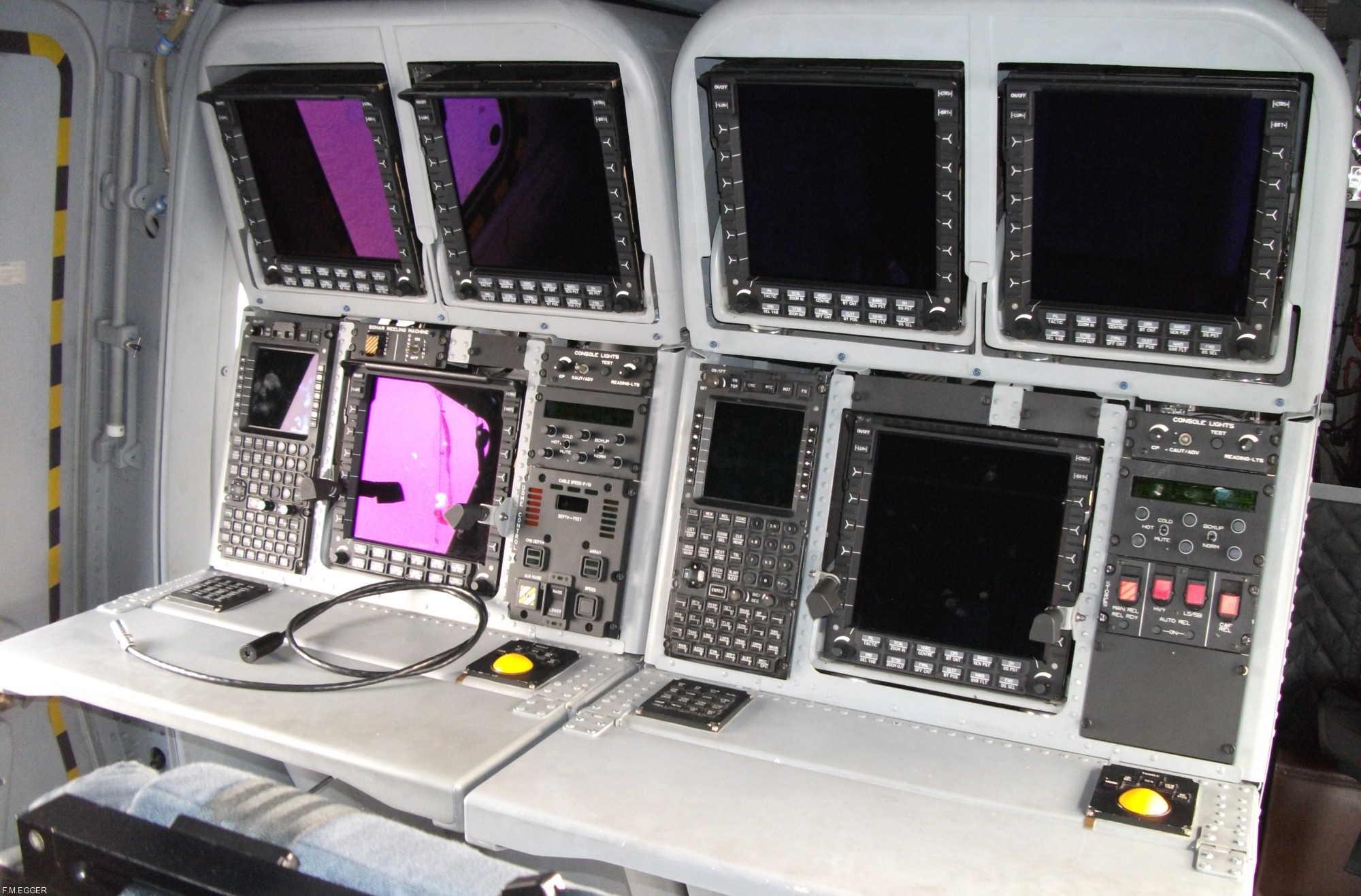 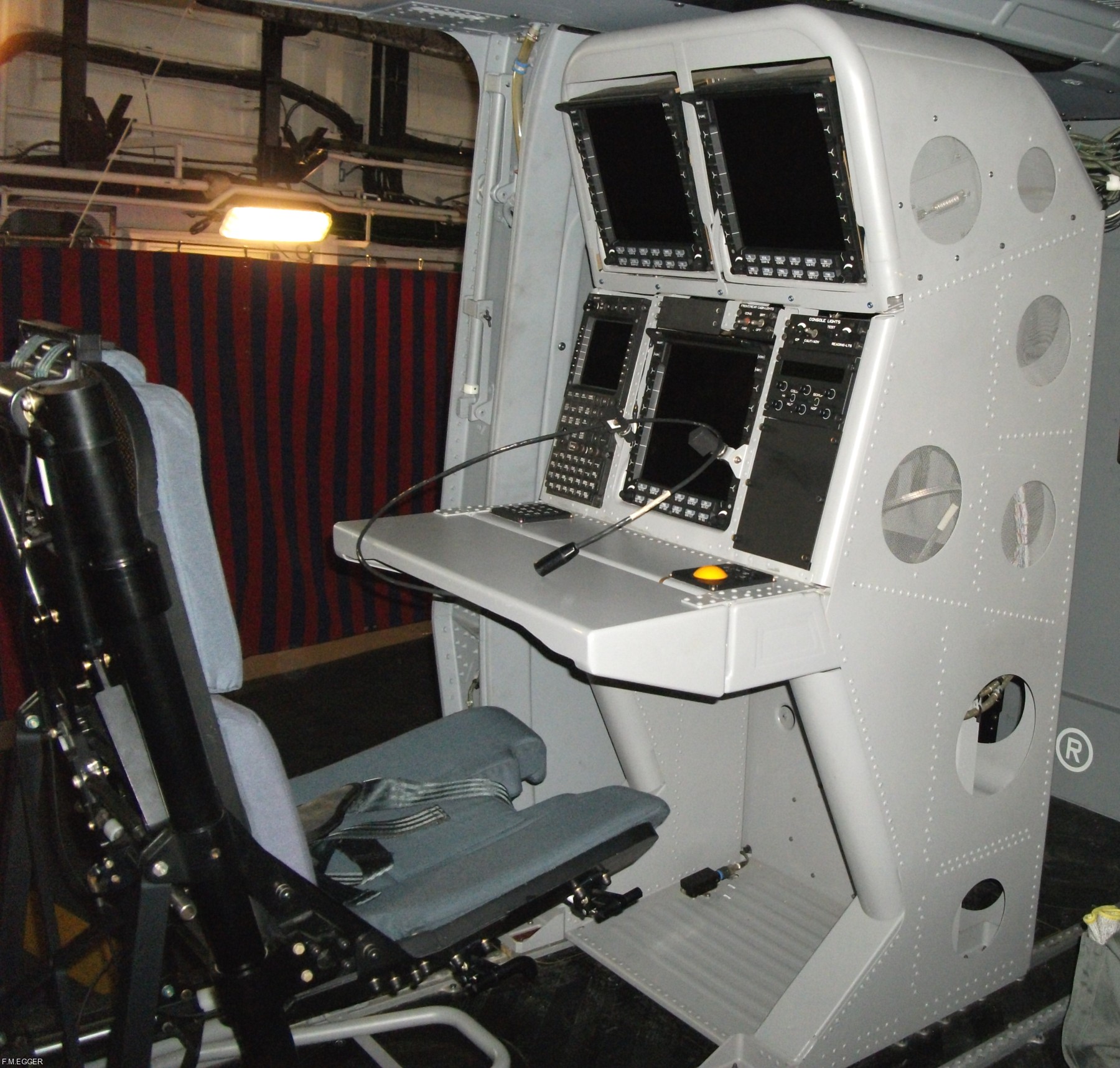 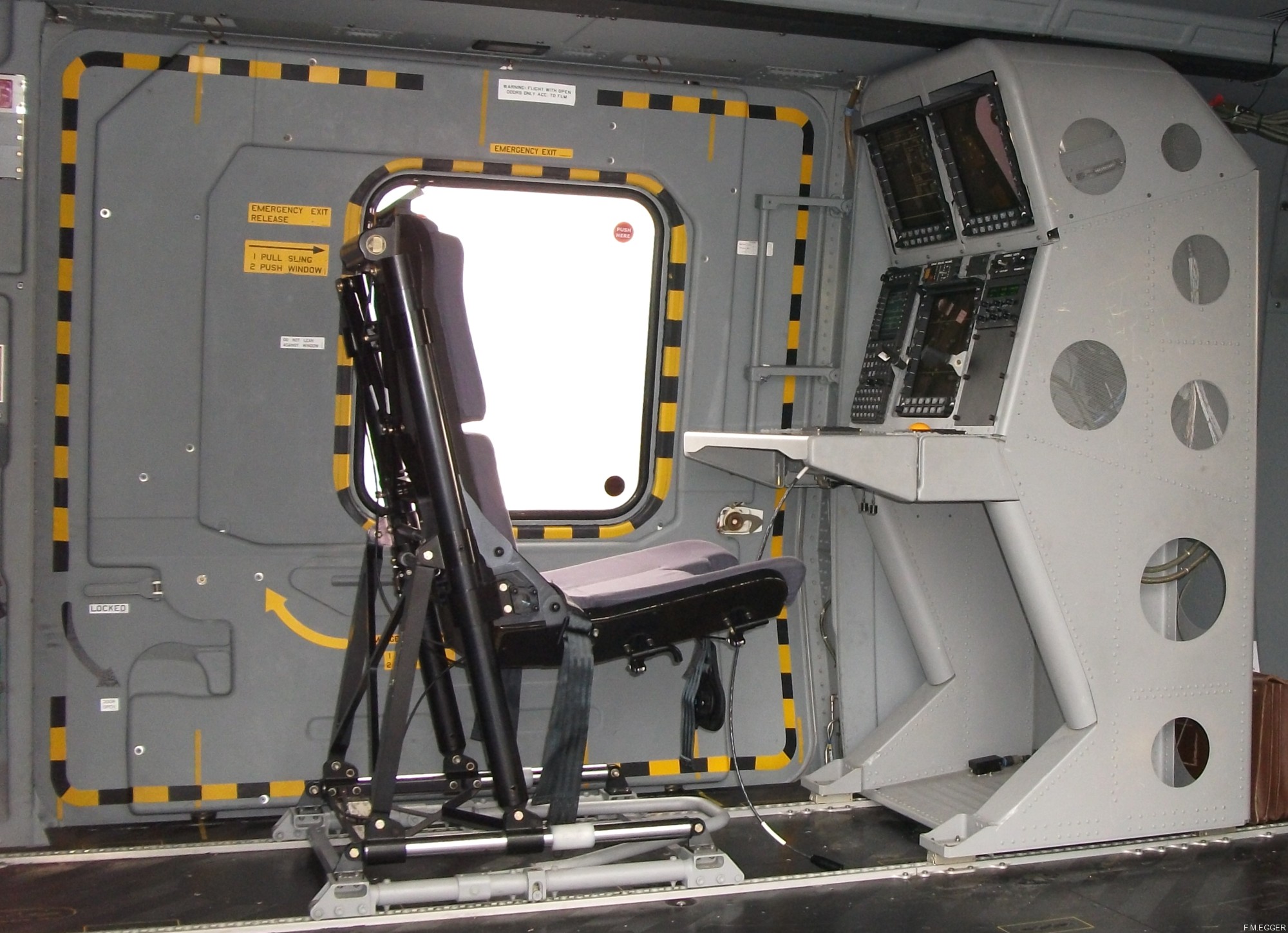 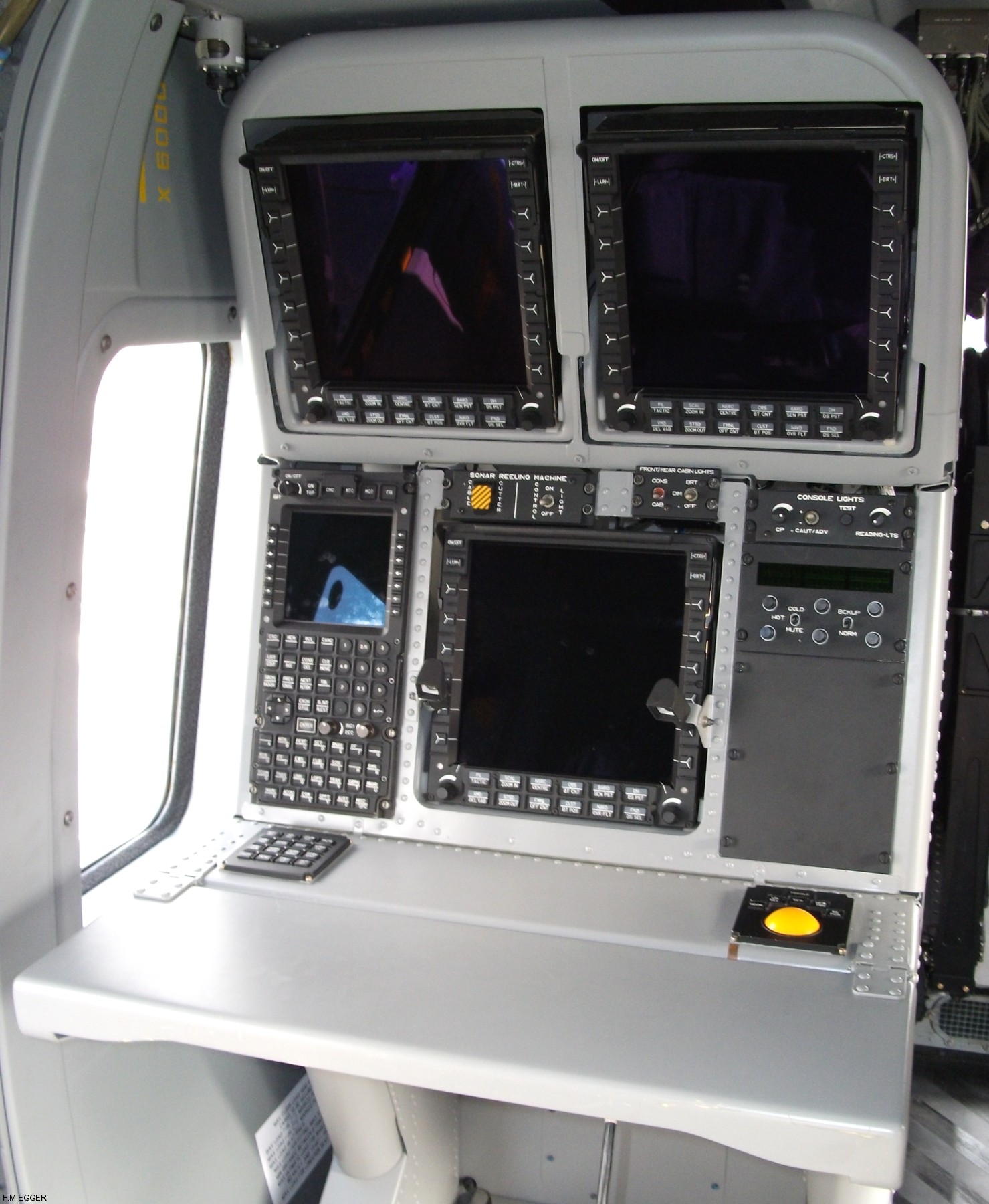 MH-90A TTH 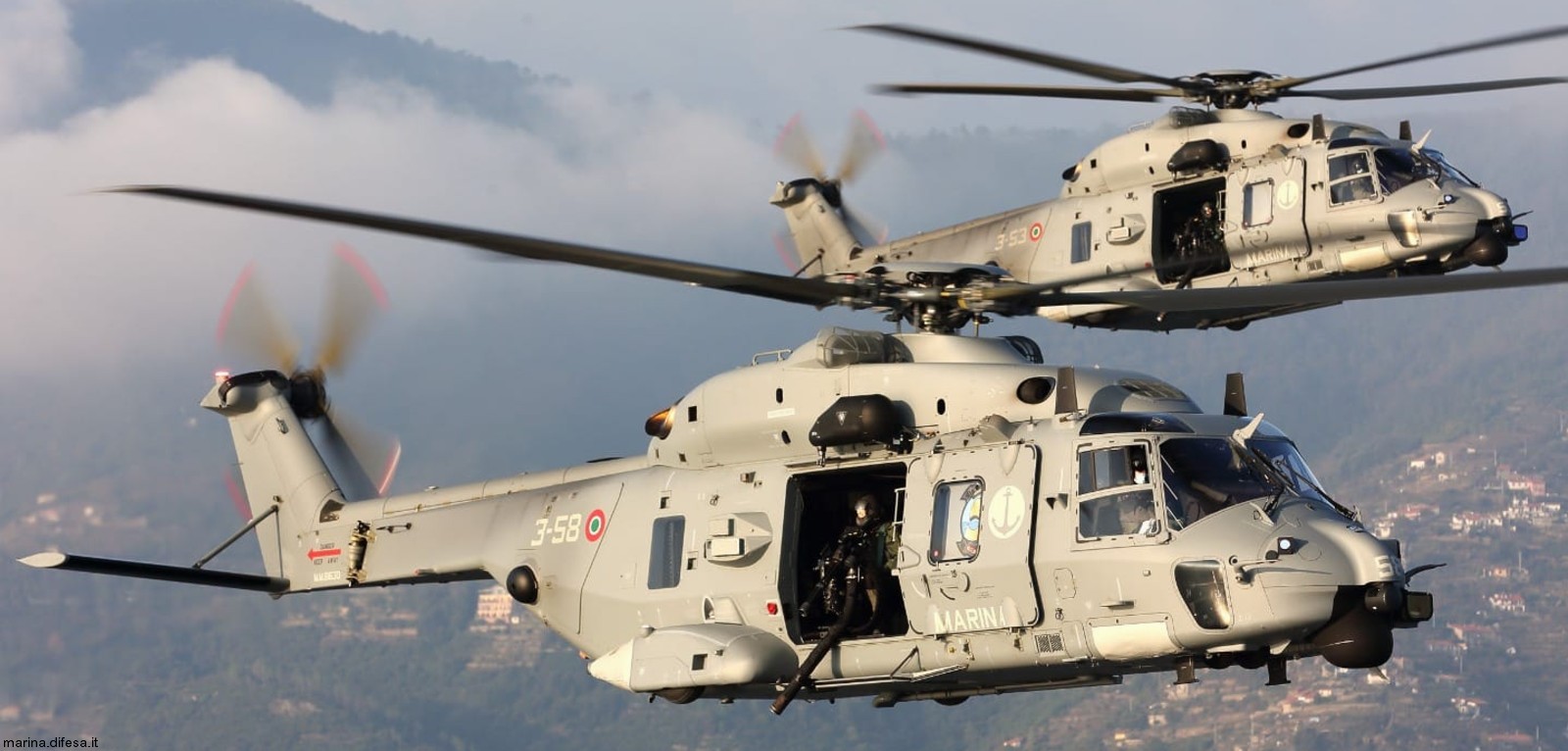 MH-90A TTH (MM81630 / 3-58 + MM81625 / 3-53) 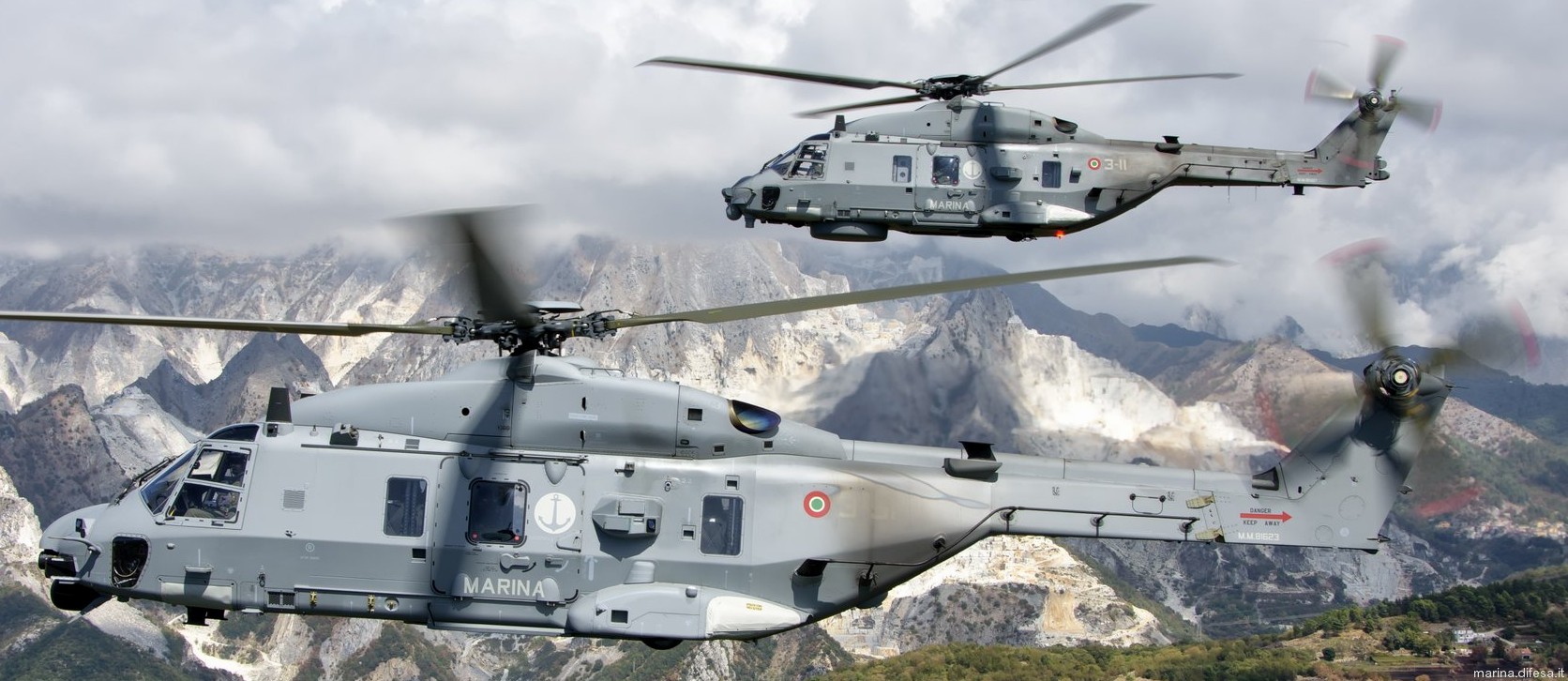 MH-90A TTH (MM81623 / 3-51) with SH-90A NFH (MM81587 / 3-11) 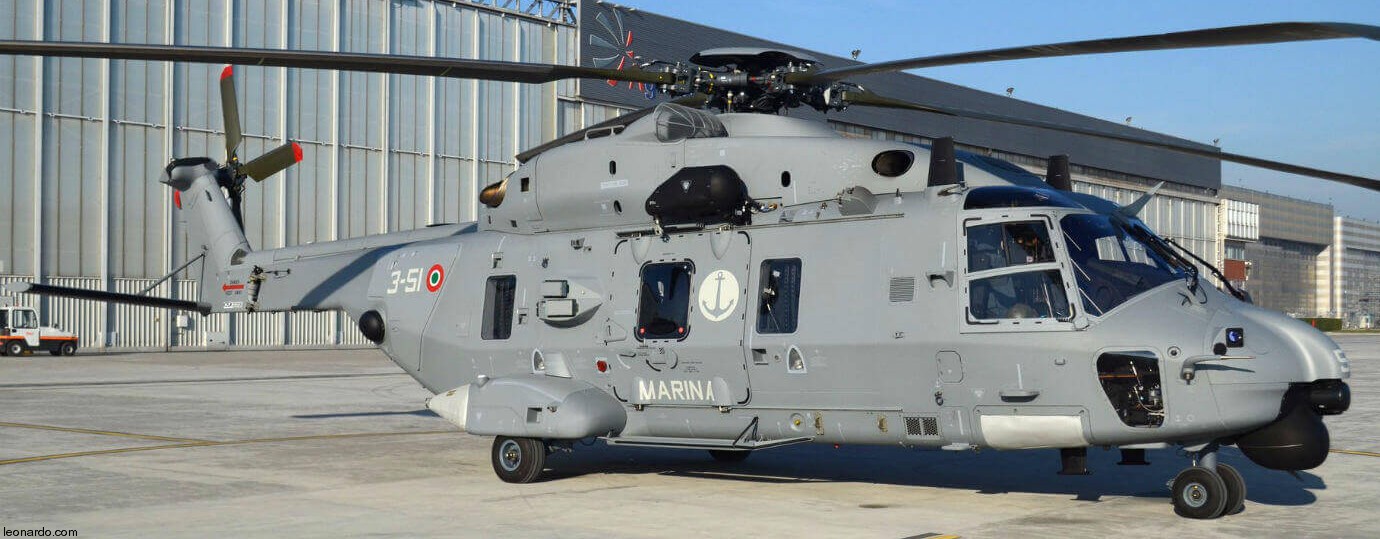 MH-90A TTH (MM81623 / 3-51) 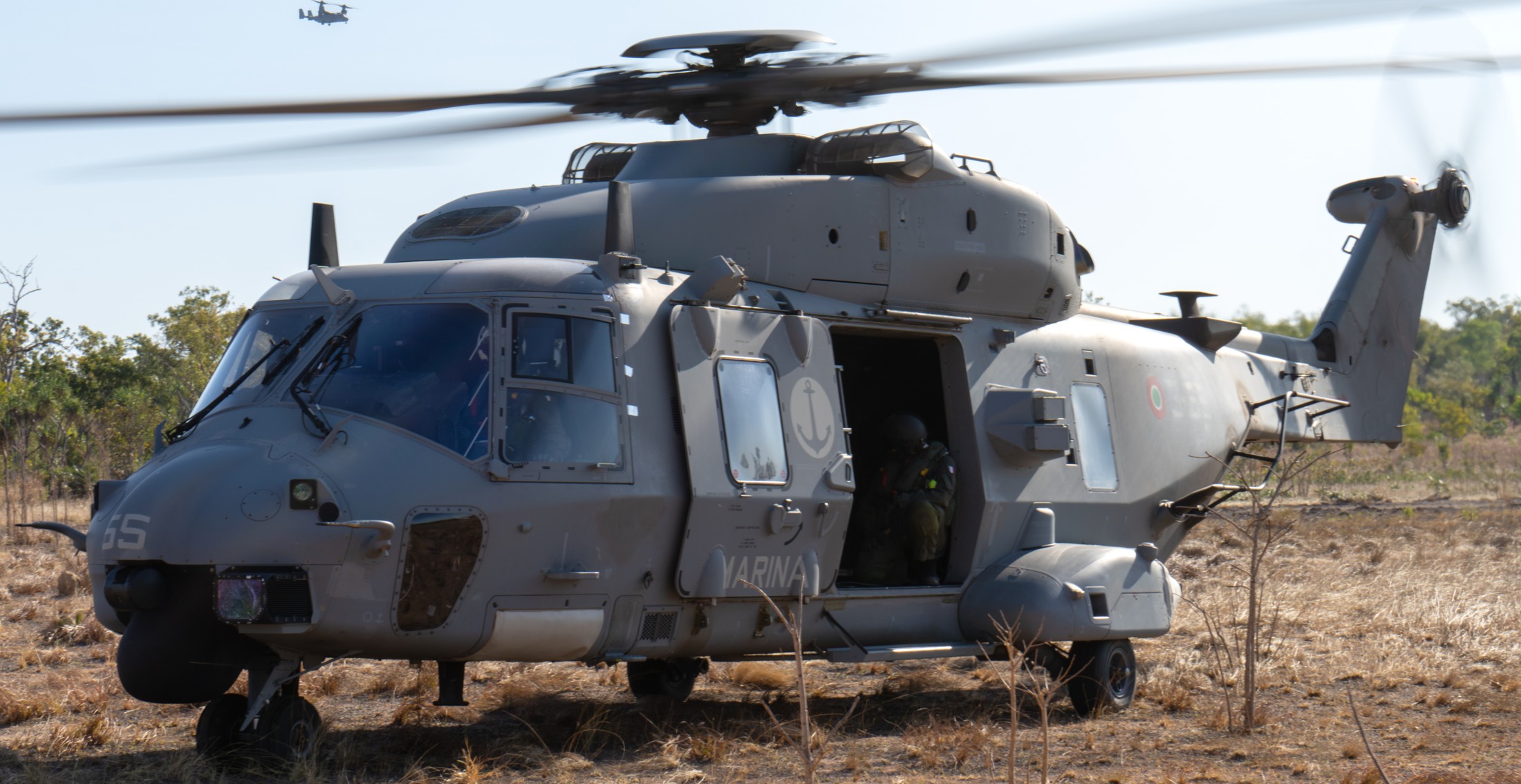 MH-90A TTH (MM81627 / 3-55)  MH-90A TTH (MM81627 / 3-55)  MH-90A TTH (MM81630 / 3-58) 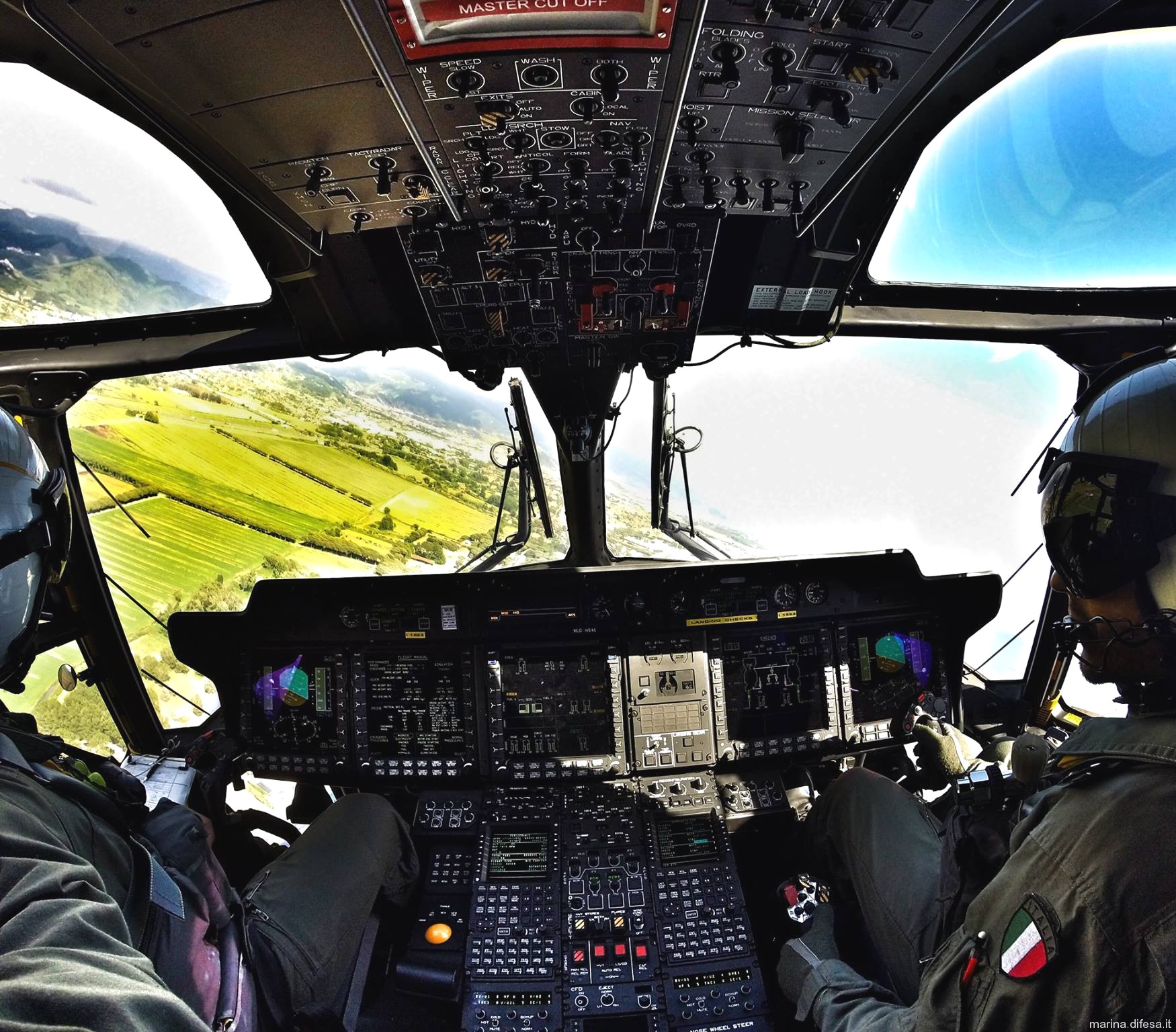 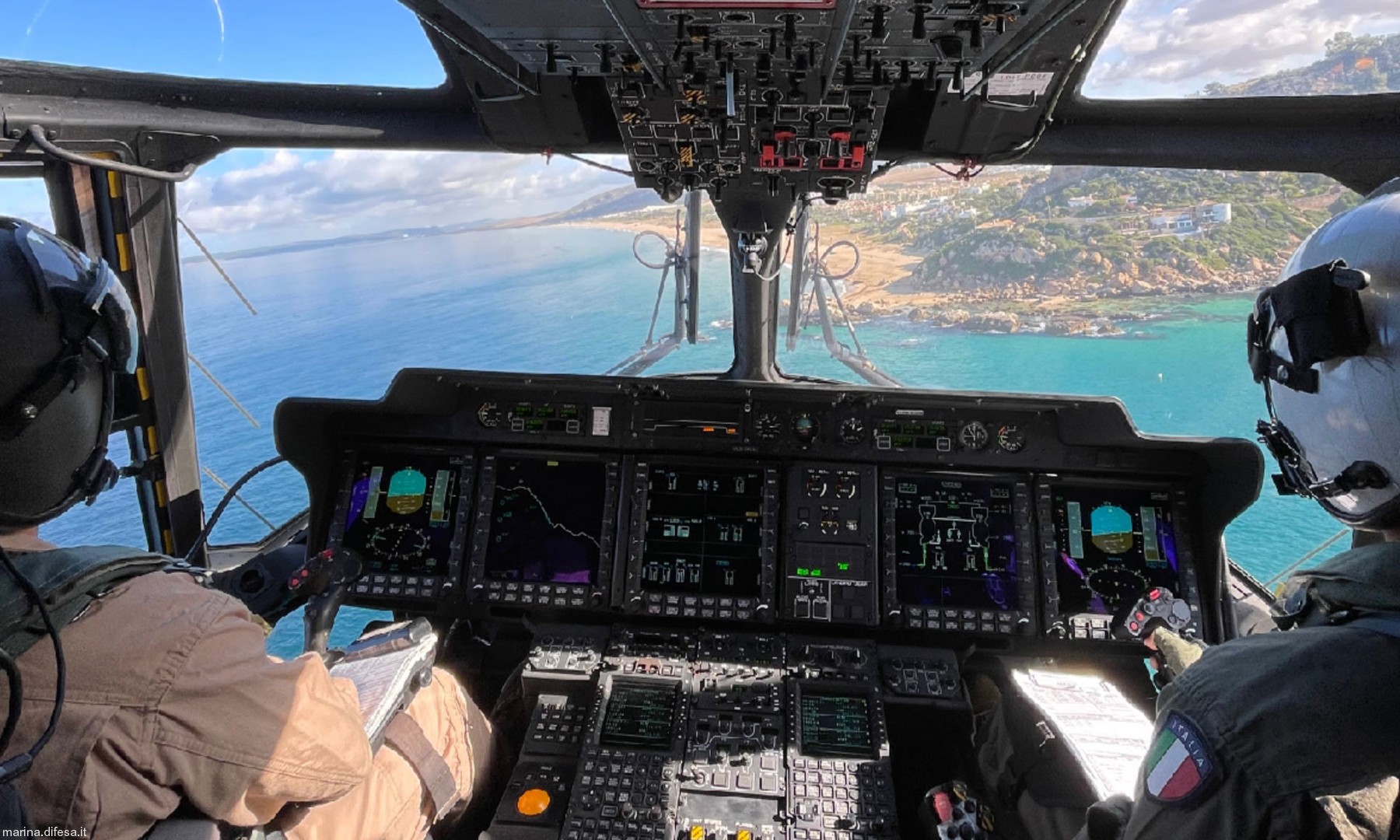 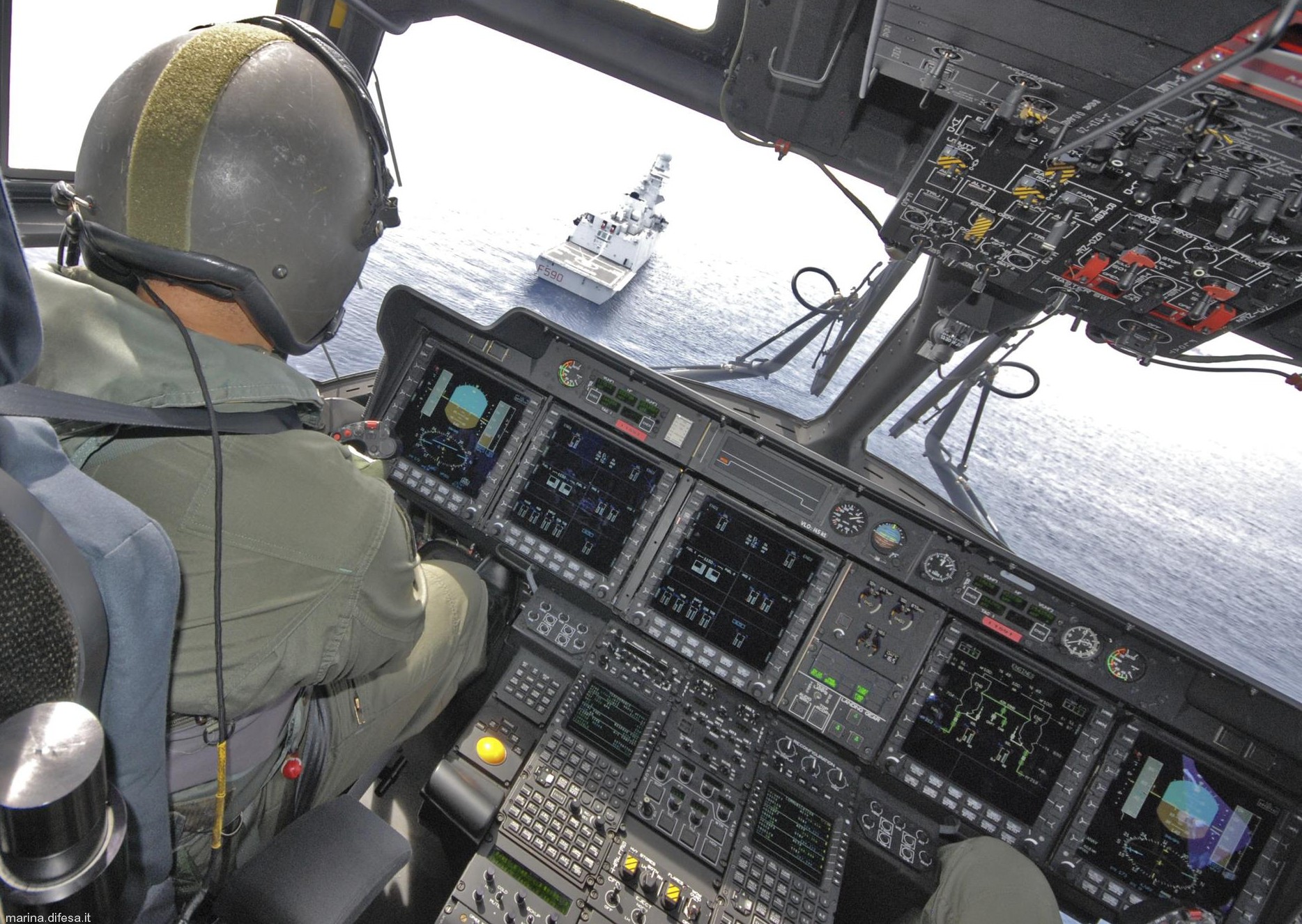   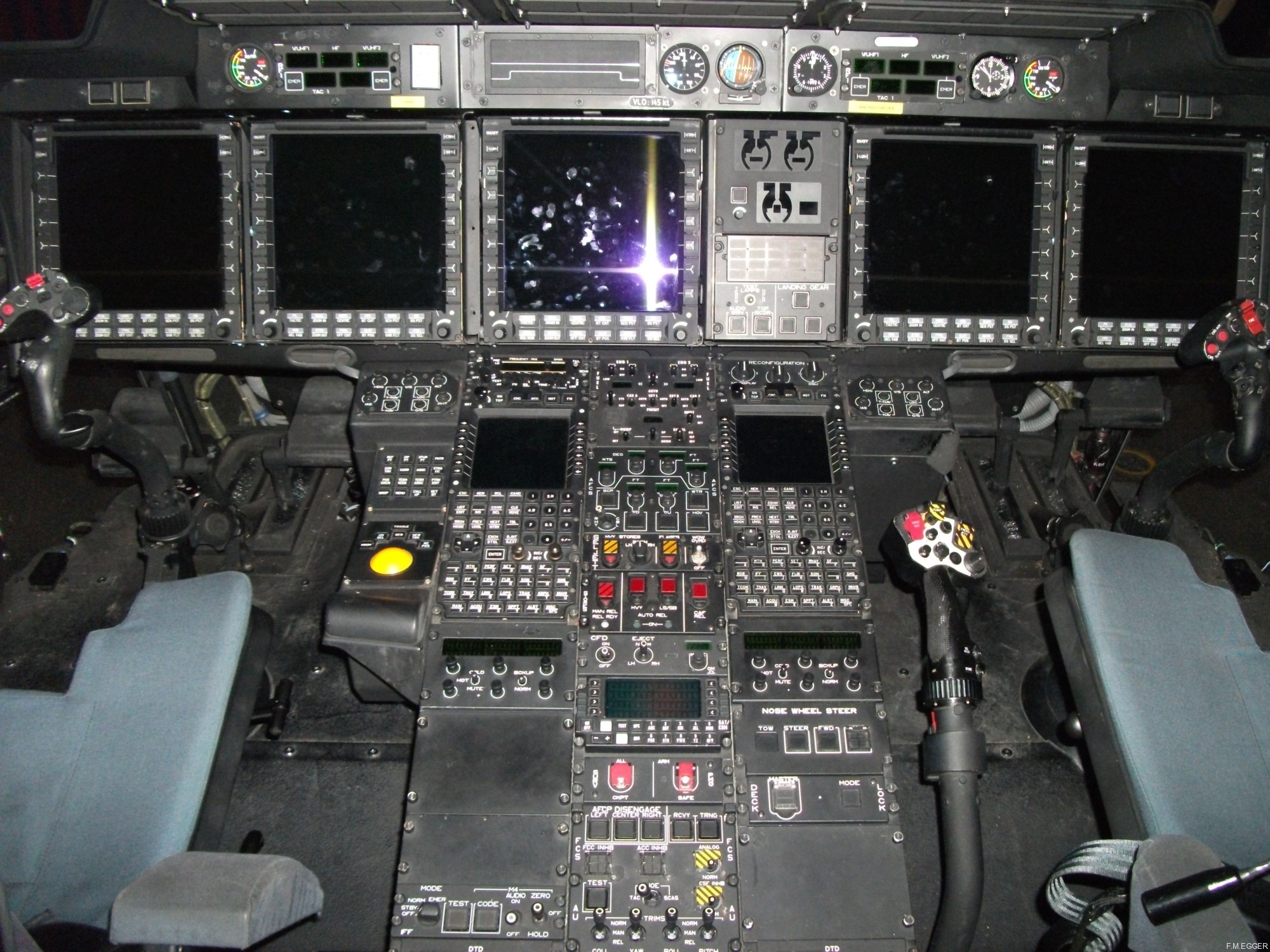  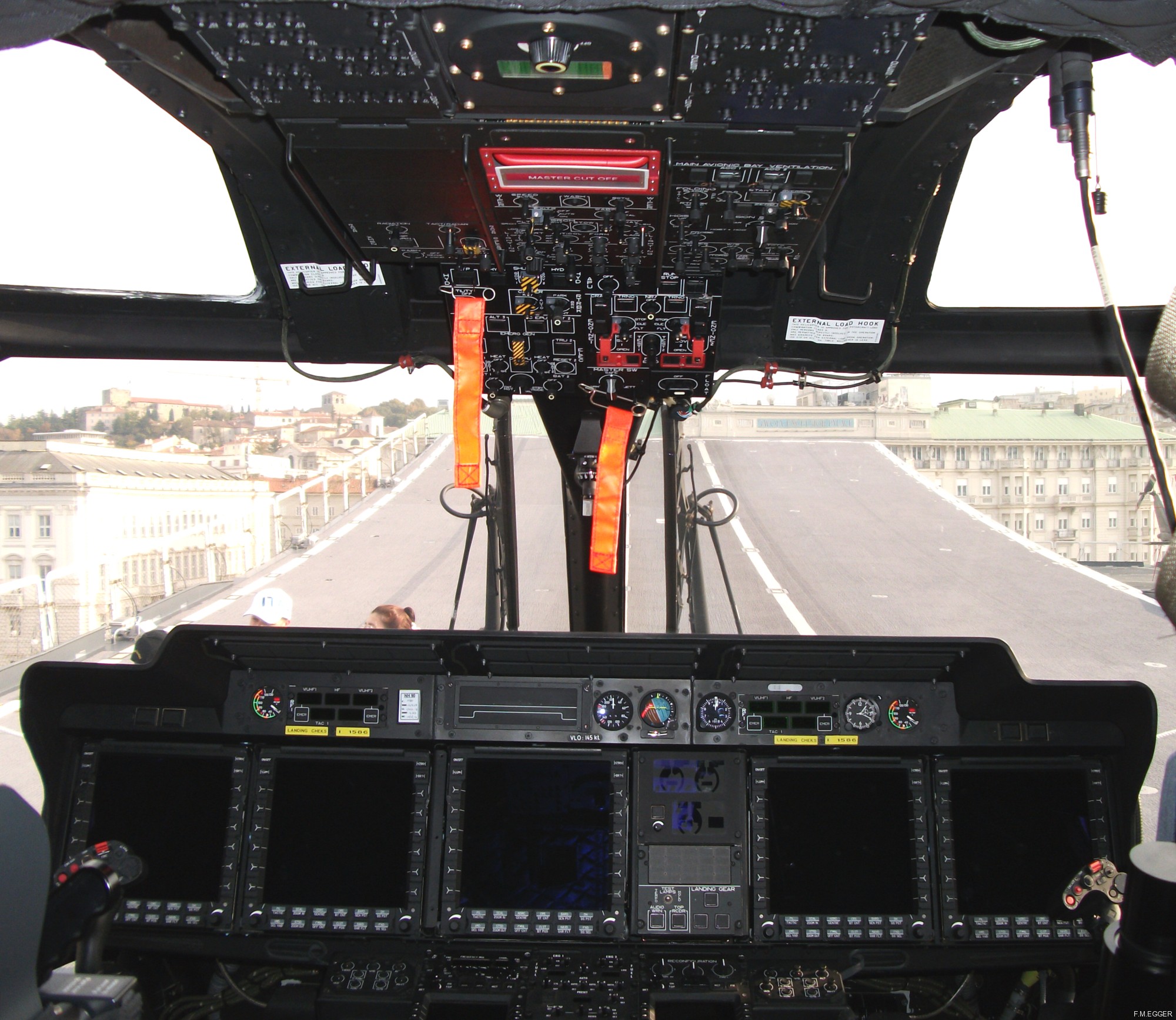 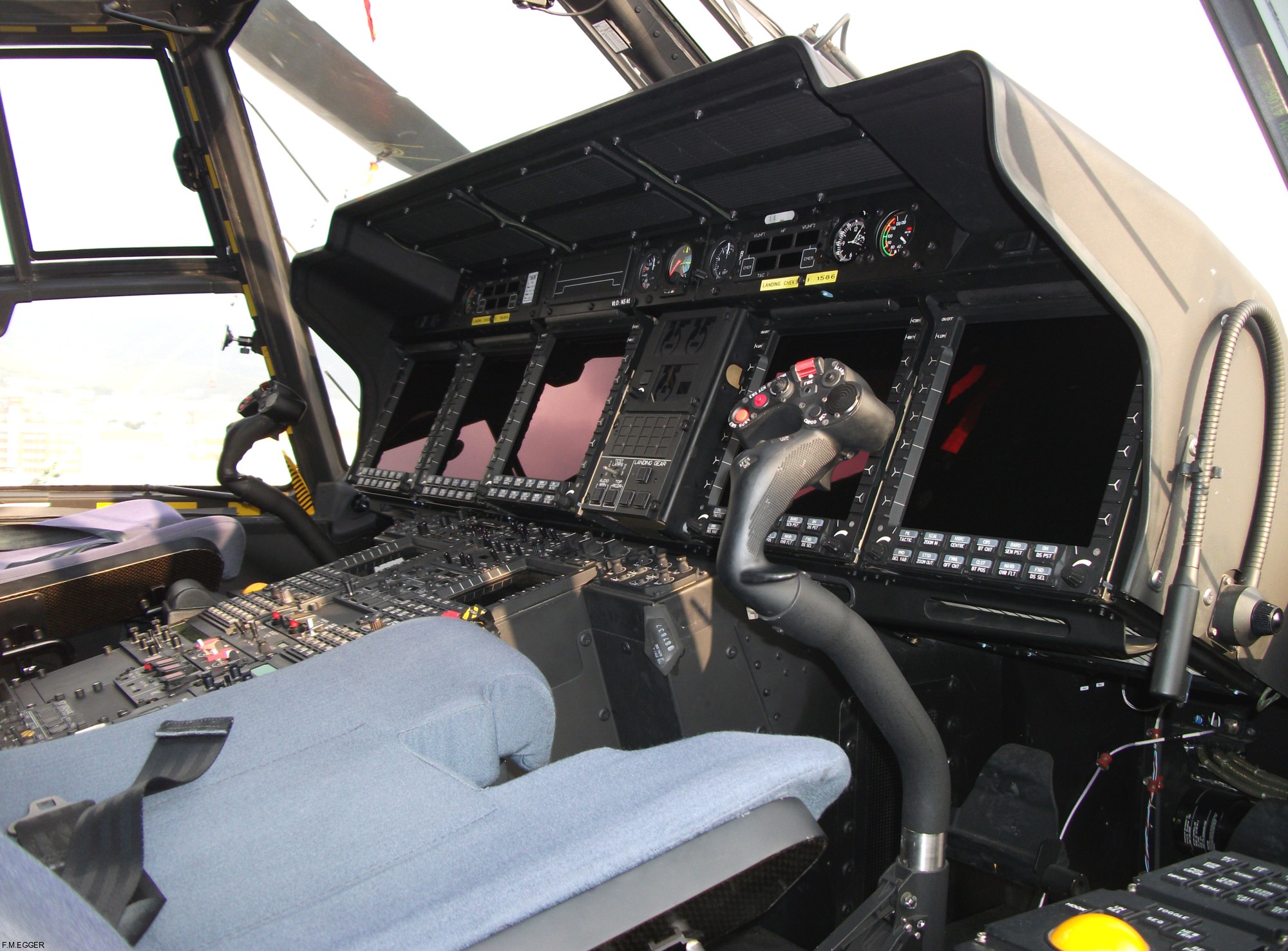 |
||
| | seaforces.org | Italian Navy start page | |

